What if you could choose a tattoo placement that offers an enormous canvas for detailed art yet allows for total privacy when needed? The floral thigh tattoo is the ultimate convergence of art and intimacy. This placement offers the stability and space necessary for large designs, turning your leg into a stunning gallery for profound expression. These expansive flower tattoos speak the timeless language of floriography, symbolizing everything from strength and sensuality to personal rebirth and commitment.
This definitive guide will dive deep into the symbolism of specific blooms like the Peony and Lotus, analyze the best styles—from photo-realistic Realism to vibrant Neo-Traditional—and provide critical advice on strategic placement and aftercare to ensure longevity. If you are ready for a high-impact piece that celebrates femininity and strength with maximum artistic detail, read on to design the perfect, enduring floral tattoo for this exceptional canvas.
Floral Thigh Tattoo Design Ideas:
The large, smooth surface of your thigh is a great place for big design ideas. A good design will flow and move with the shape of your leg.
Compositional Styles Tailored to the Thigh
The thigh gives you room for two main types of large, flowing designs:
- The Full Thigh Panel: This design covers the whole front or outer side of your thigh. Because the area is so big, the artist can use every inch to add great detail and color. This creates a stunning look, like a single, huge painting. These designs often taper, or narrow down, gracefully from your hip.
- The Cascading Vine/Wrap-Around: This style uses flowers and vines that flow down the leg. They might wrap all the way around your thigh. This look stands for personal growth, resilience, and a life journey that keeps going. The design must be drawn especially for your body. This makes sure it does not look twisted when you sit or walk.
Design Enhancement and Contextualization
Adding other elements to your flowers helps tell a deeper story:
- Flower and Fauna Combinations: Adding animals gives your tattoo extra meaning. Butterflies often mean transformation and beauty. Birds can mean freedom.
- Integrating Geometry/Abstract Elements: For a modern look, you can add shapes like mandalas. Mandalas stand for balance and spiritual development.
- Hidden Details: Many people hide initials, dates, or small symbols in the leaves and vines. This makes the tattoo deeply personal and unique.
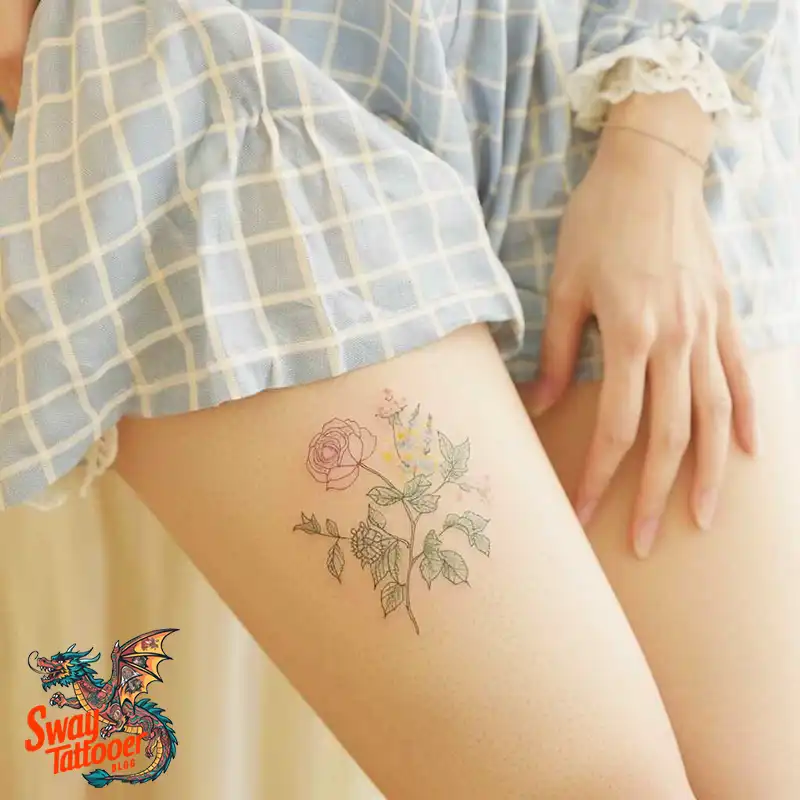
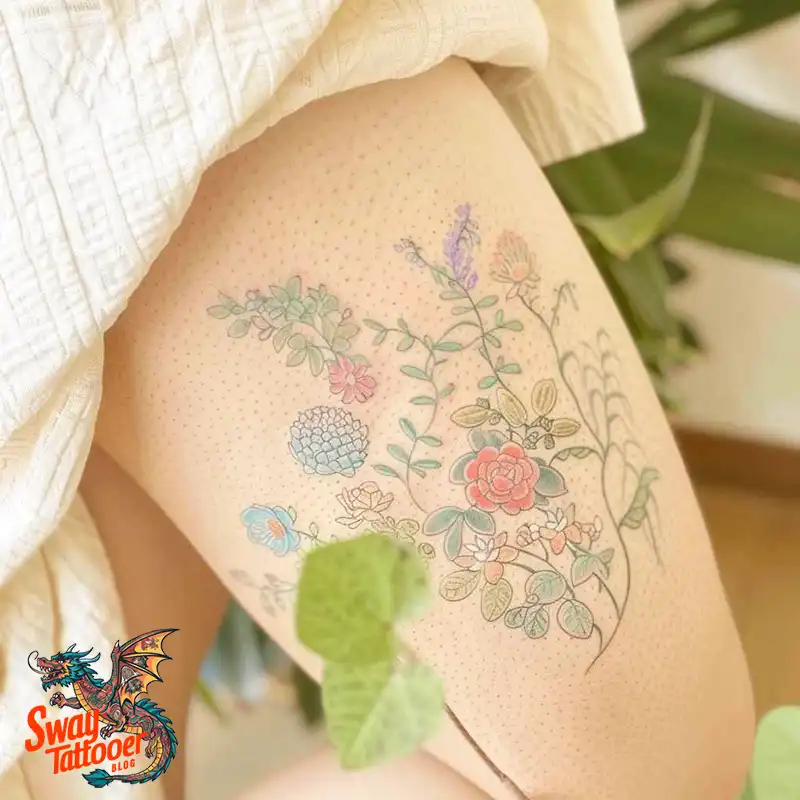
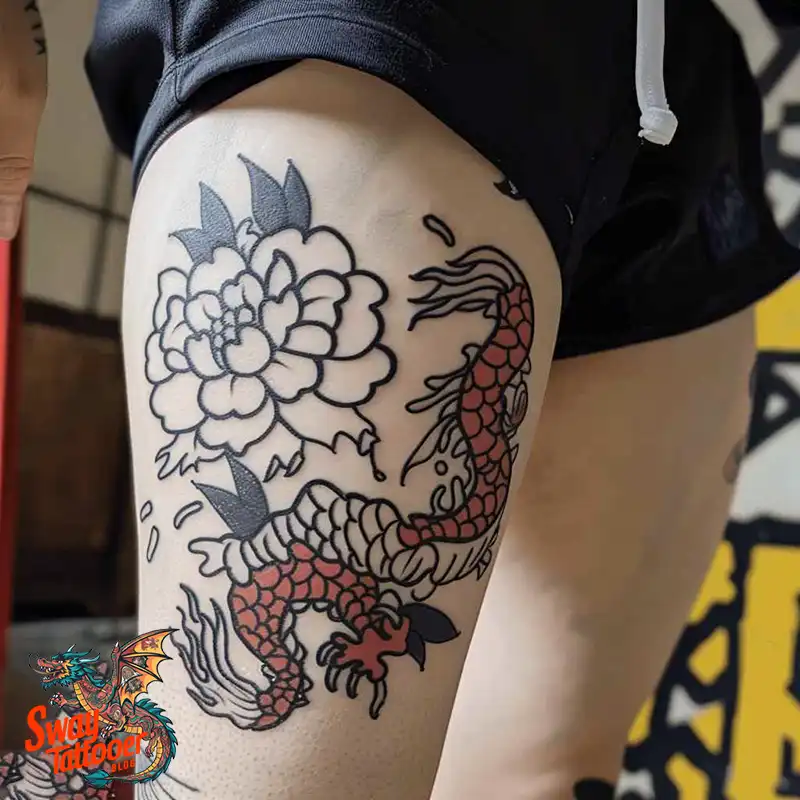
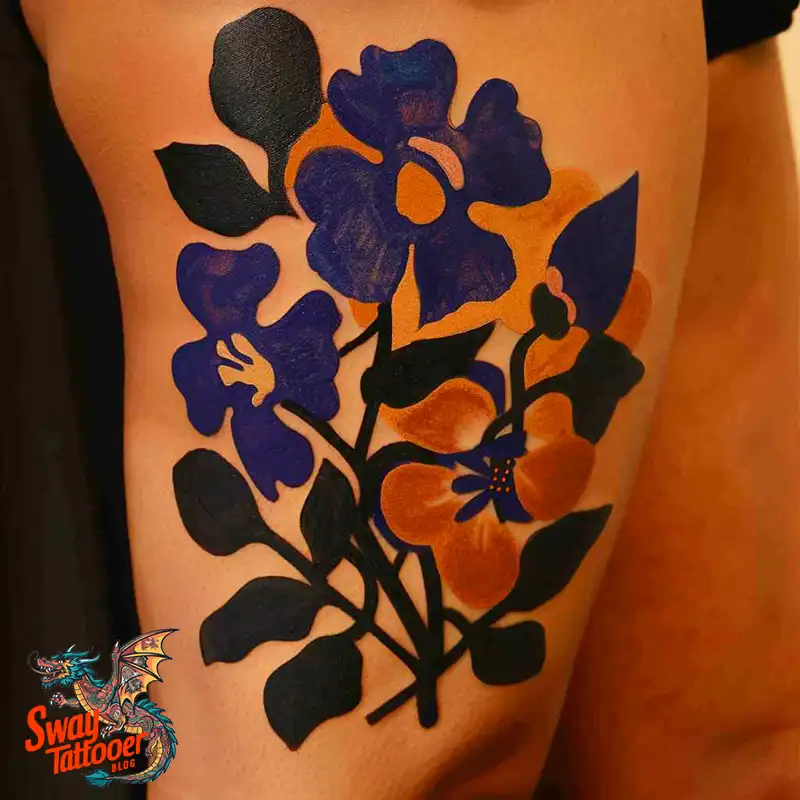
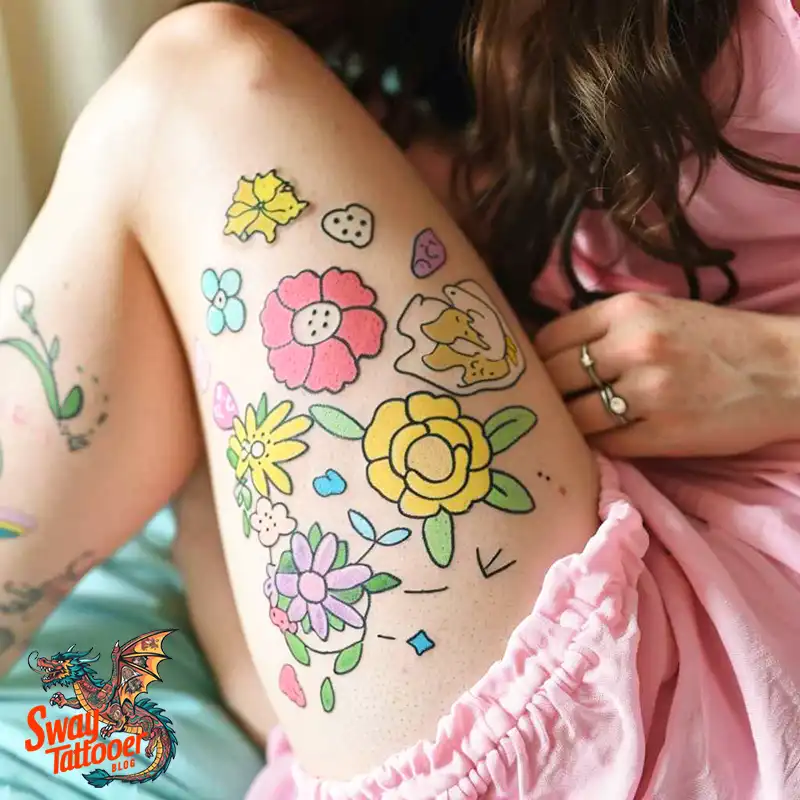
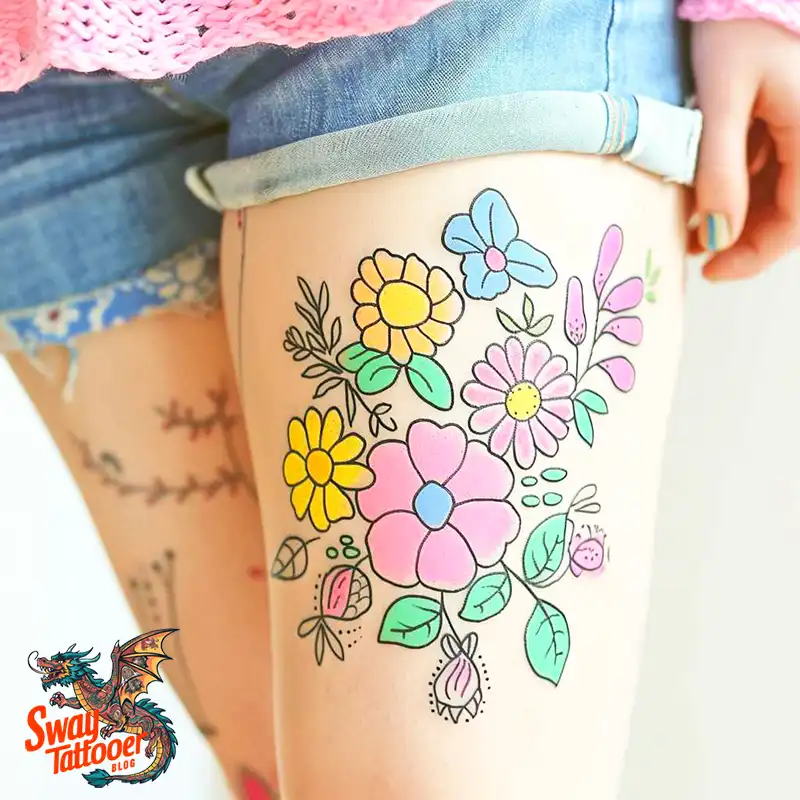


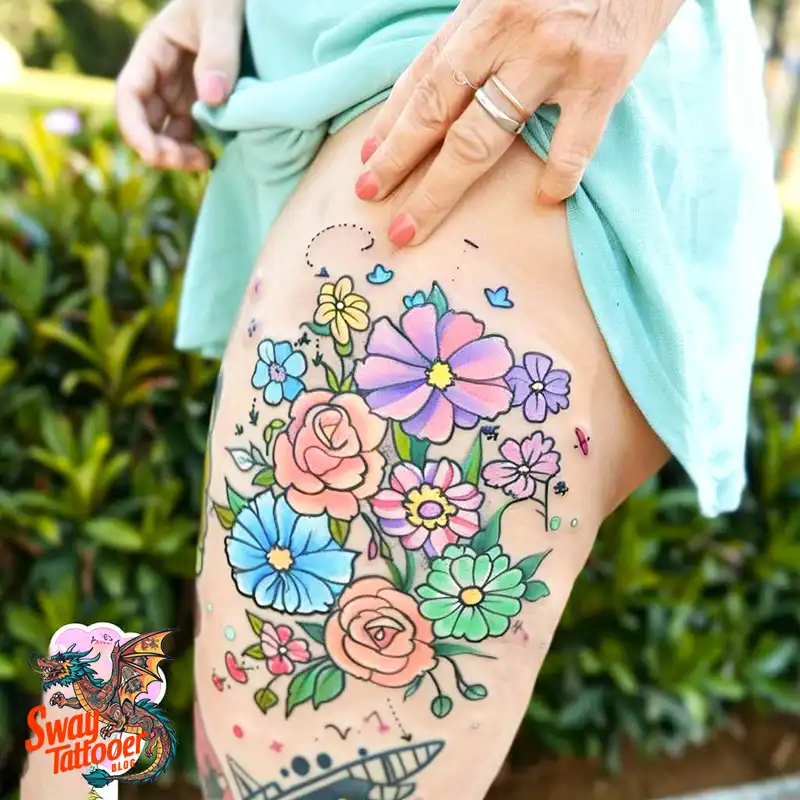
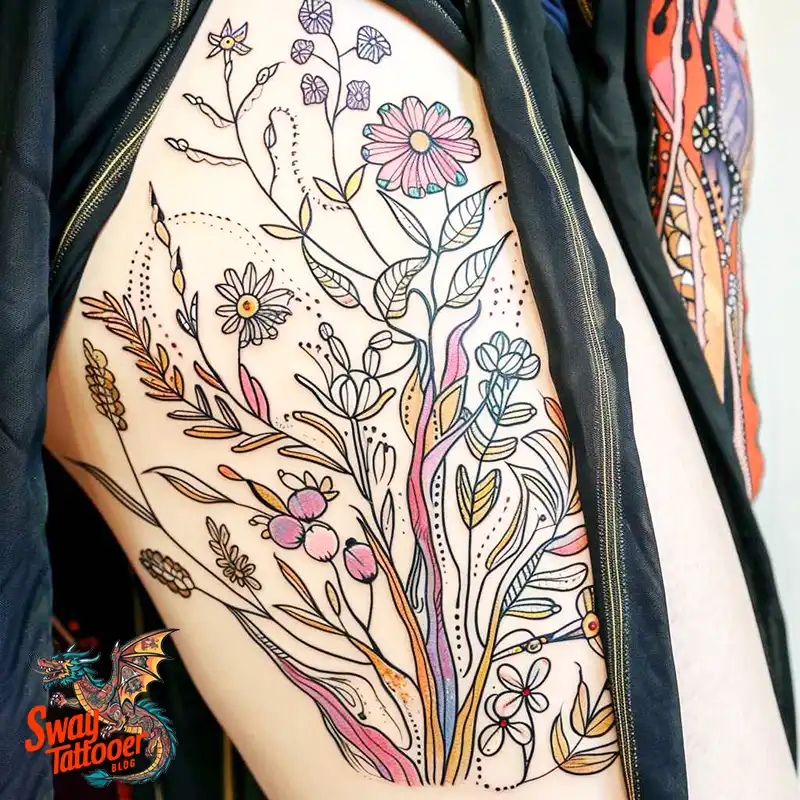
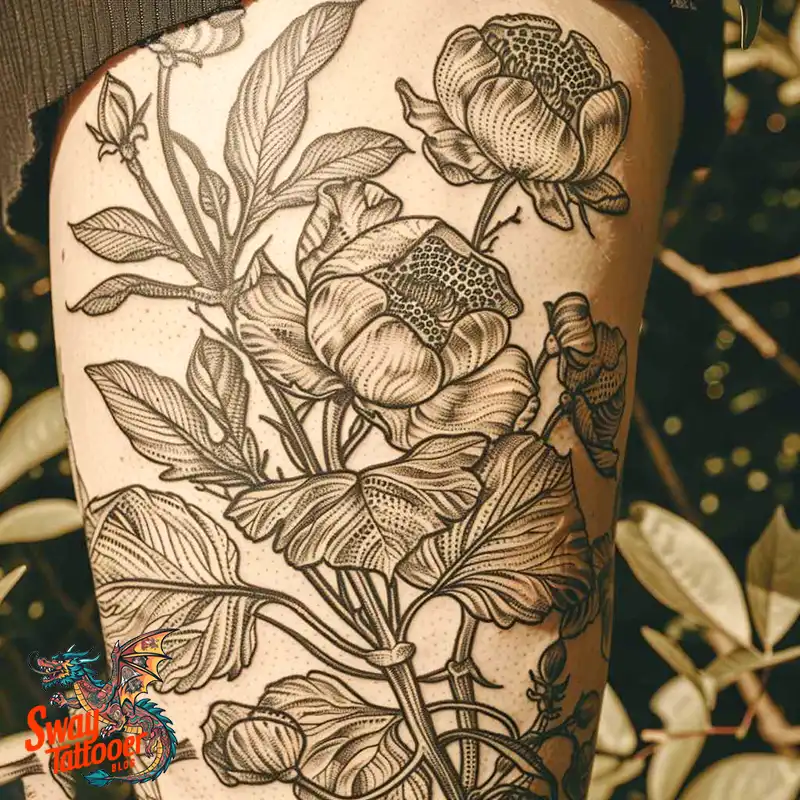

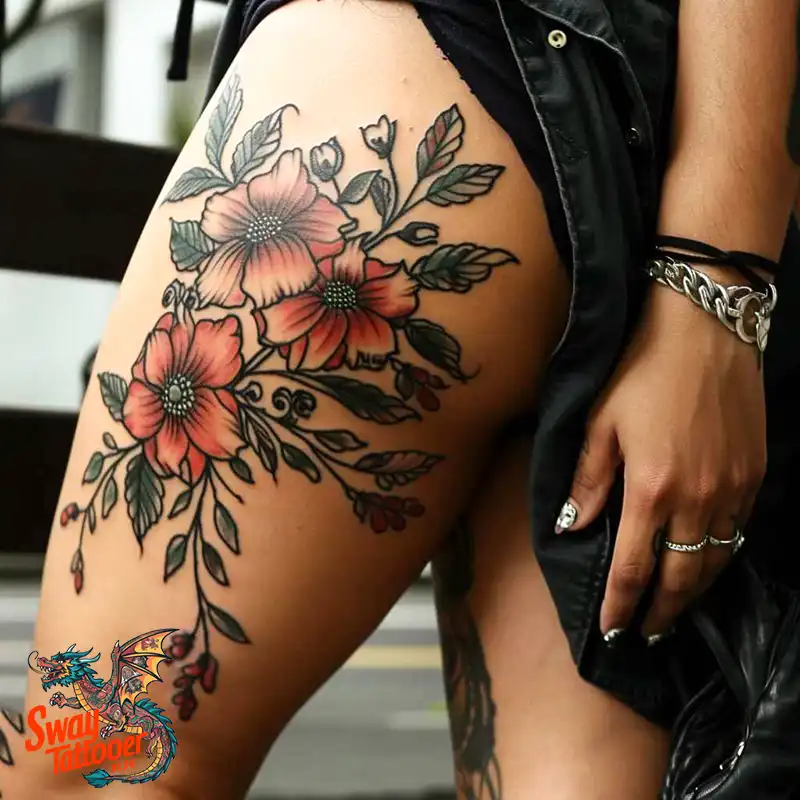
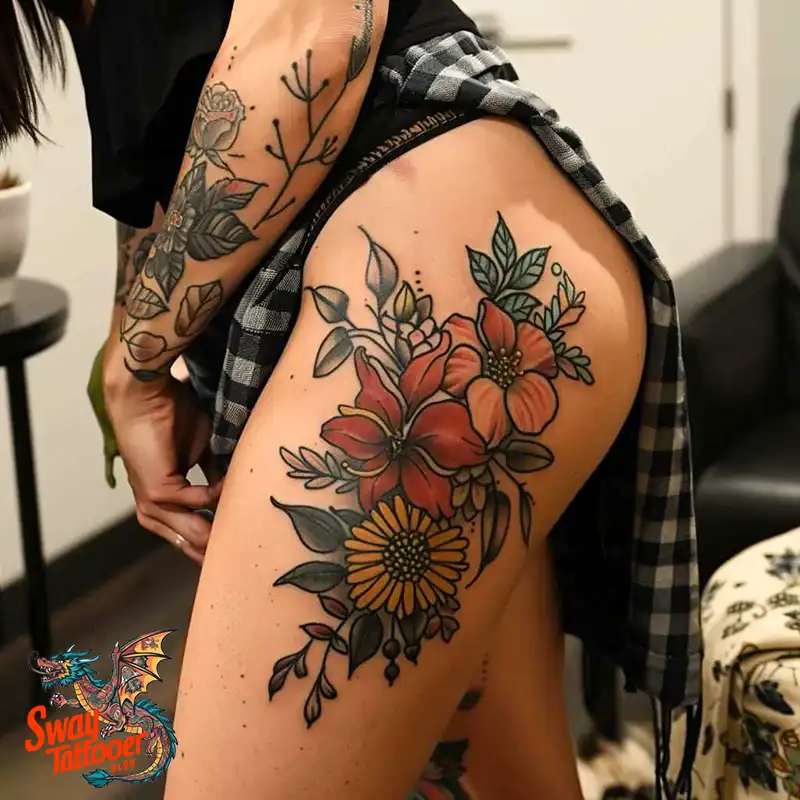
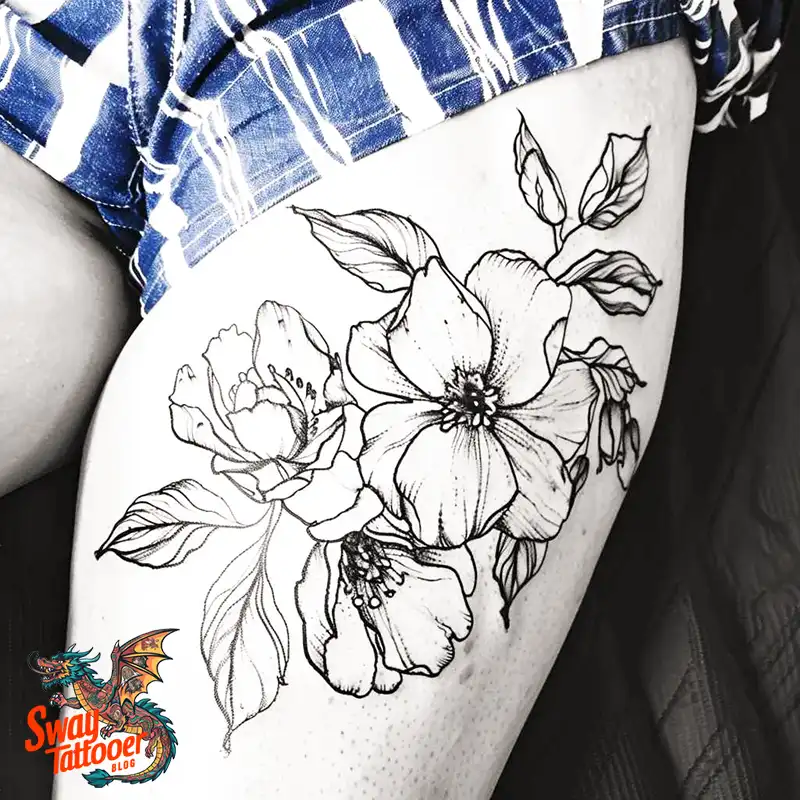
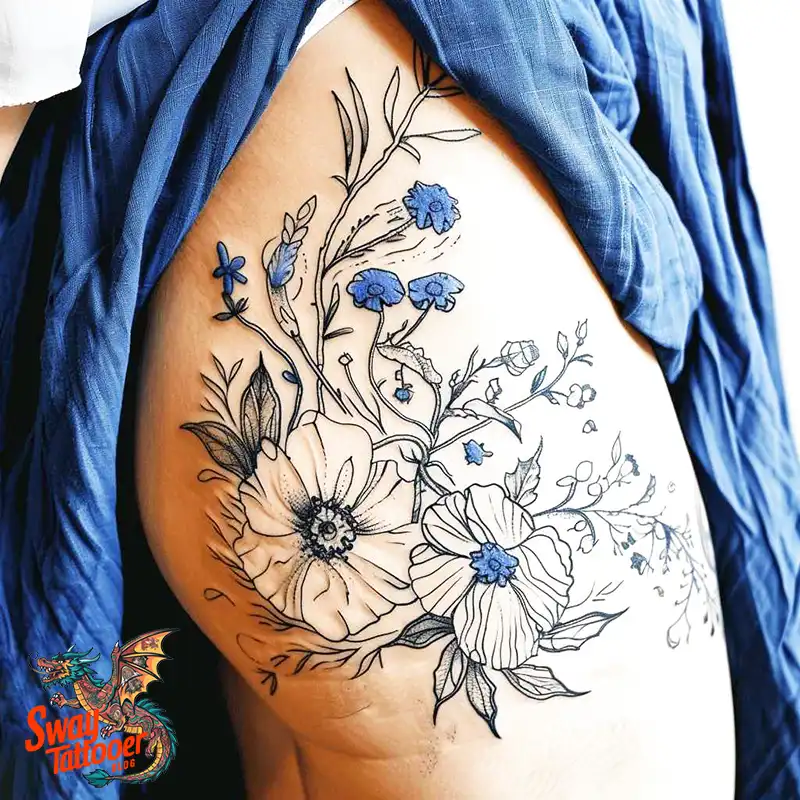
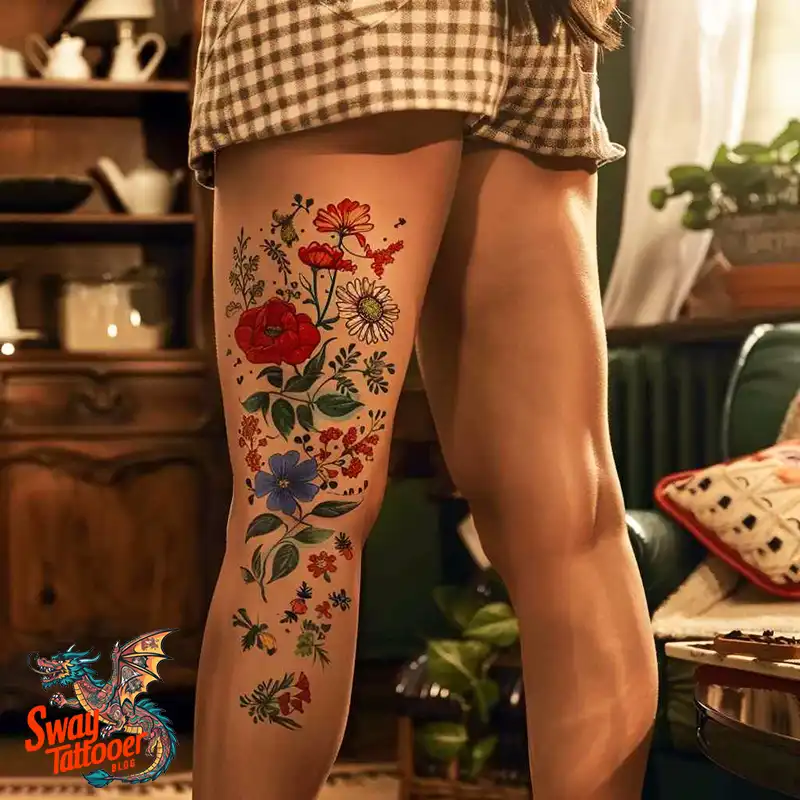

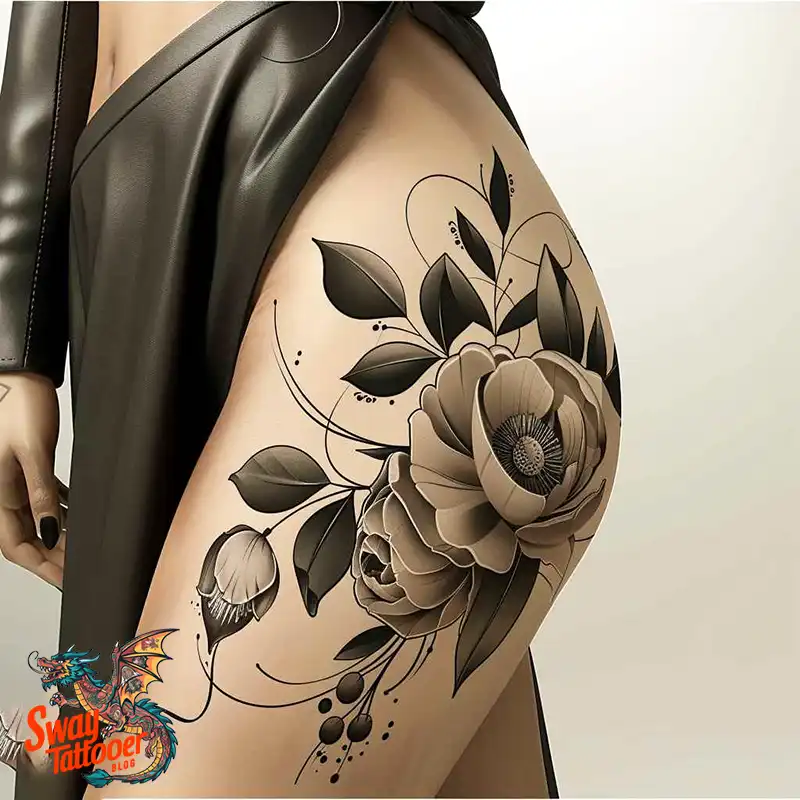

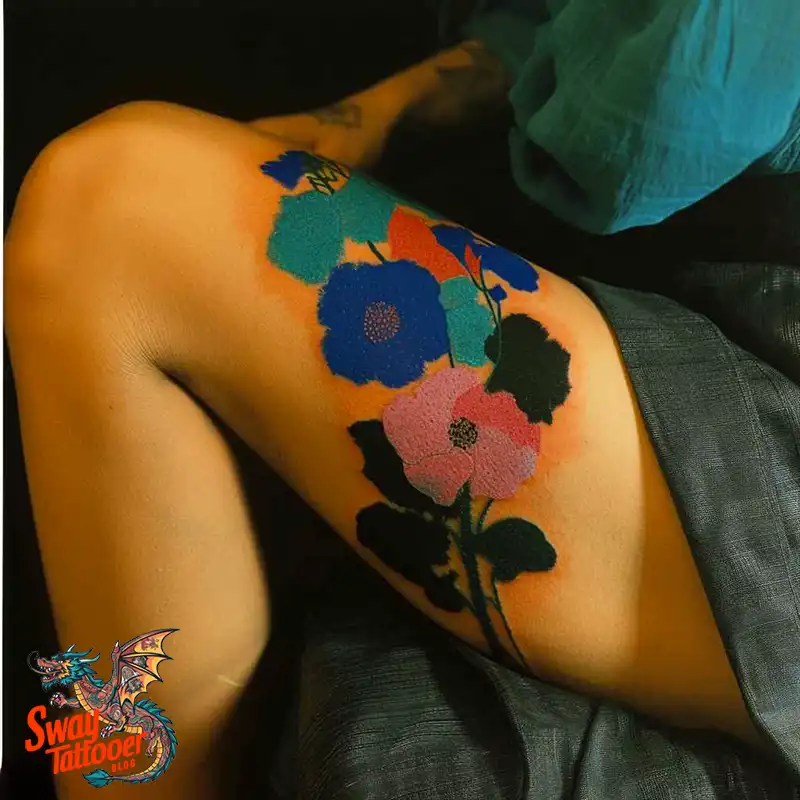


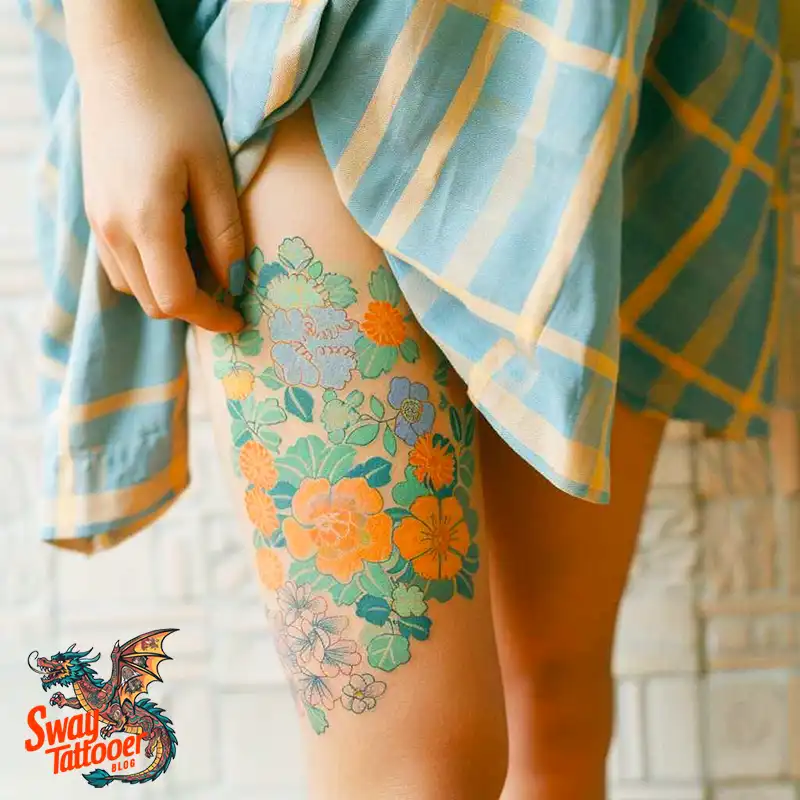
Placement Strategies:
The best spot for your floral thigh tattoo depends on two main things: how much pain you can handle and how visible you want the art to be.
The Visibility, Pain, and Friction Continuum
| Thigh Location | Pain Level | Visibility | Great for These Designs |
| Outer Thigh | Lowest Pain | Medium (Easy to show) | Large, complex designs and Realism |
| Inner Thigh | Highest Pain | Low (Intimate/Private) | Small, delicate flowers and Fine Line styles |
| Front Thigh | Moderate Pain | Medium/High (Balanced) | Flowing vertical designs and bold statements |
- Outer Thigh: This is the easiest place to get tattooed. It has a lot of fat and muscle, which acts like a cushion over the bone. It is often the best choice for first-timers who want a big, detailed design.
- Inner Thigh: This area is very sensitive because the skin is thinner and has more nerve endings. It hurts the most, but it is perfect for private, personal designs. The main problem here is friction from clothing rubbing on the skin while it heals.
Artistic Styles for Floral Thigh Tattoos
The large, flat canvas of the thigh is ideal for styles that need a lot of space for detail and color.
- Realism: This is the style that makes the flowers look exactly like real photos. Artists need the thigh’s large size to draw the tiny details and use subtle color changes without the ink blurring over time. This style is perfect for single, stunning roses or detailed lilies.
- Neo-Traditional: This style uses strong, classic black outlines but fills them with rich, modern colors. It is a bold, clear style that ensures your large peony or lily design keeps its visual strength for years.
- Watercolor and Illustrative Styles: Watercolor uses gentle color blending to make the tattoo look like a soft painting. The thigh gives the artist room to let the colors flow beautifully. Illustrative tattoos blend bold lines with fine shading, making the piece look like a personalized drawing.
- Fine Line and Blackwork: For an elegant or simple look, Fine Line uses delicate lines for exquisite detail. Blackwork uses only black ink. This is great for a subtle lotus or an elegant vine pattern.
- Oriental (Irezumi) Context: Japanese tattooing often uses the thigh as part of a larger leg piece. The Peony (Botan) is a key flower in this style, symbolizing honor and courage.
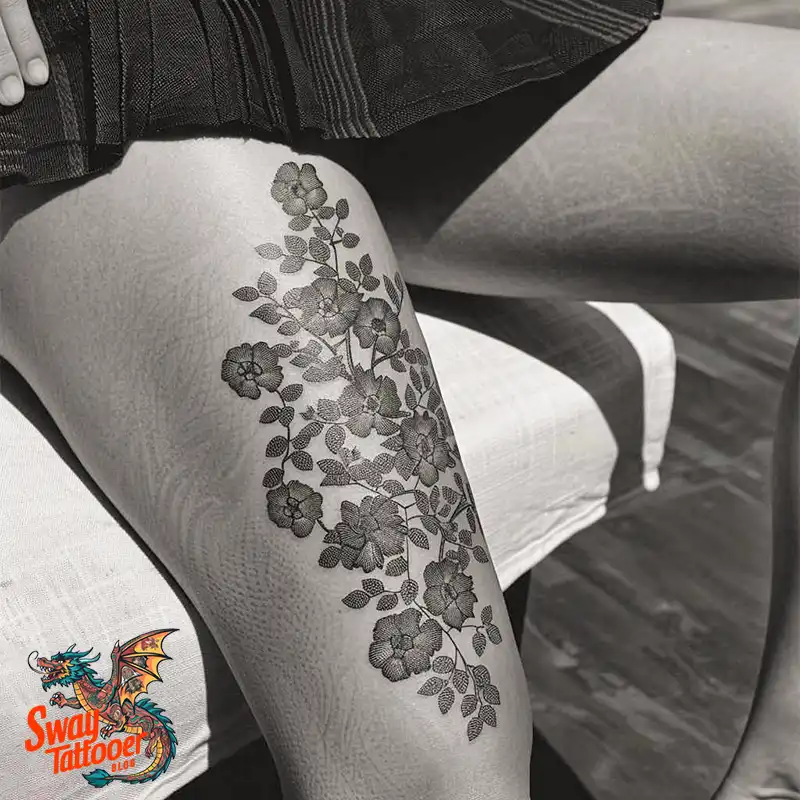


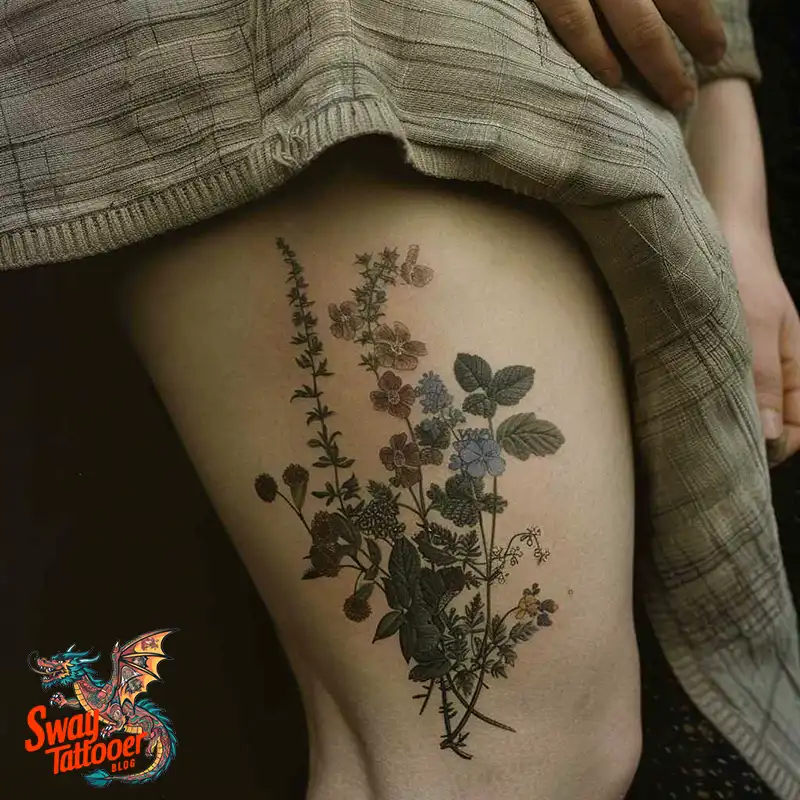


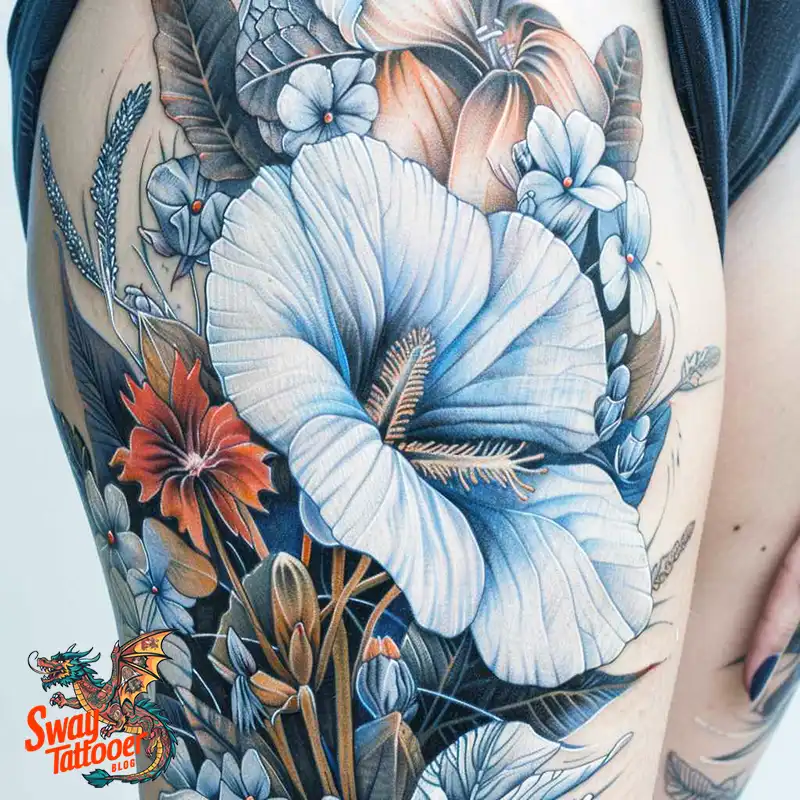
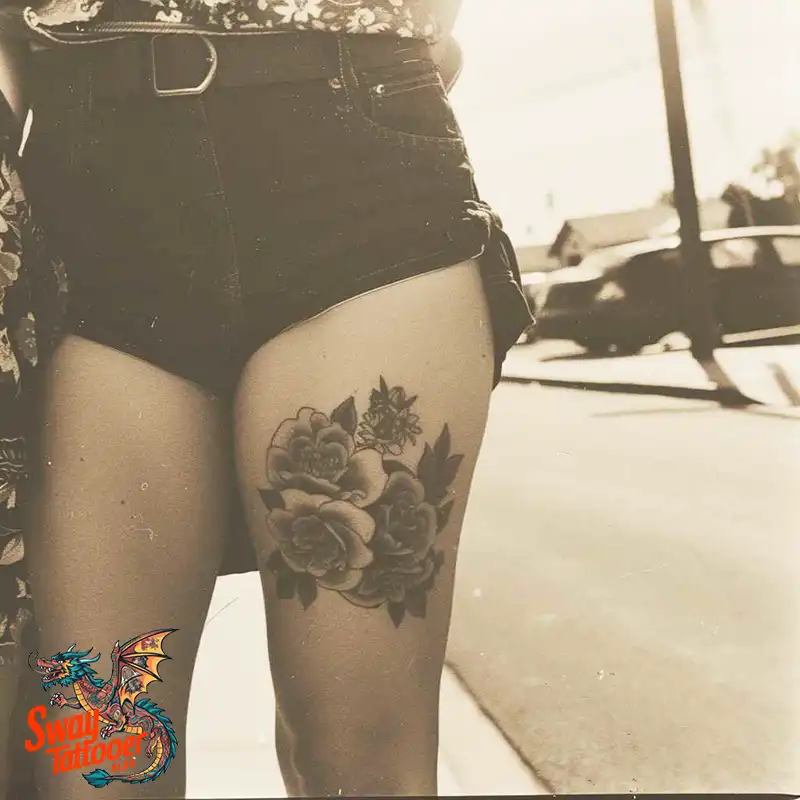

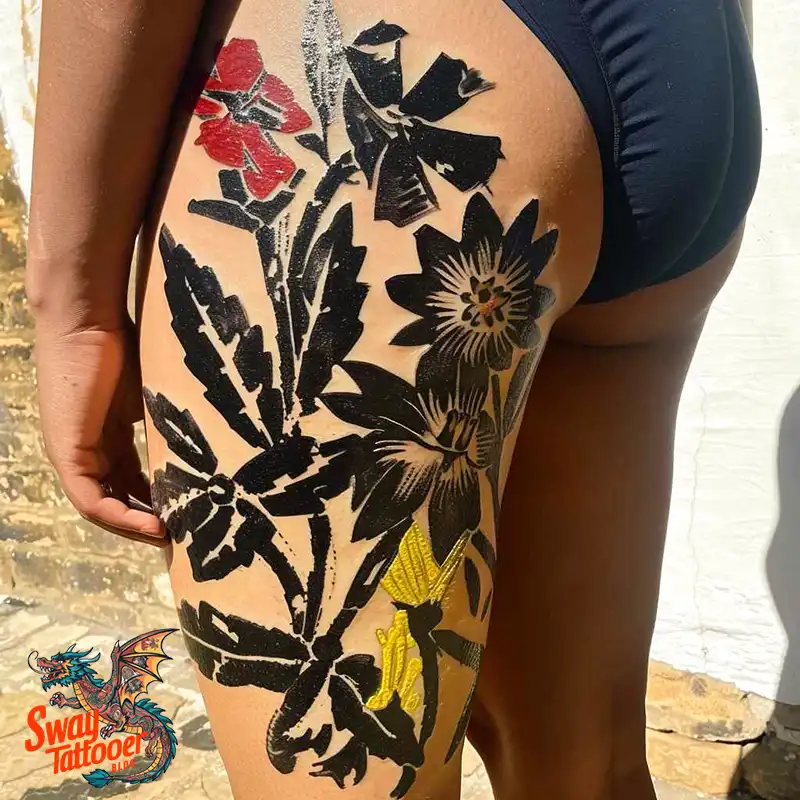



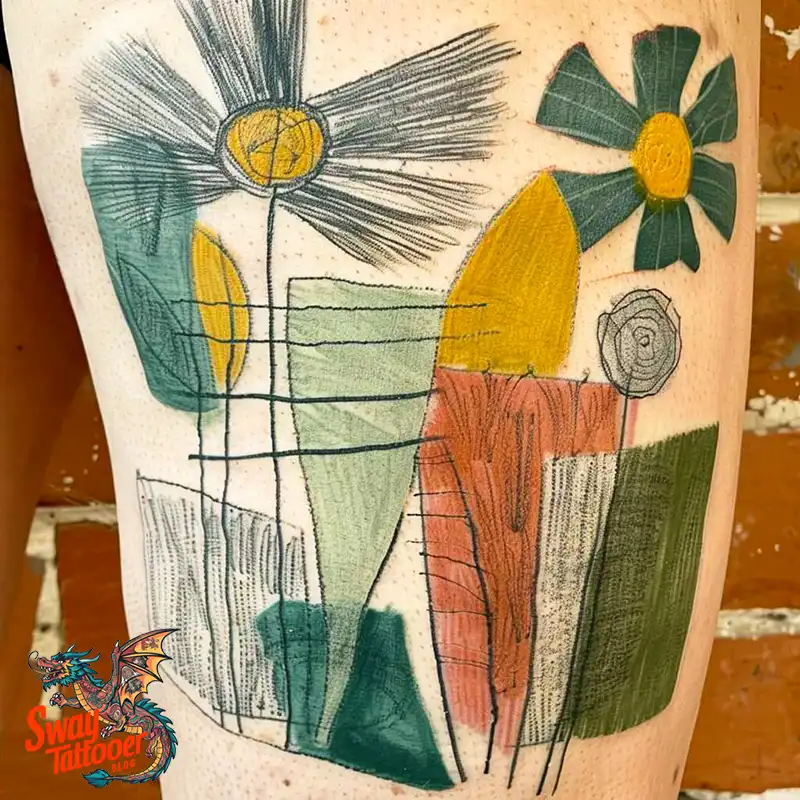


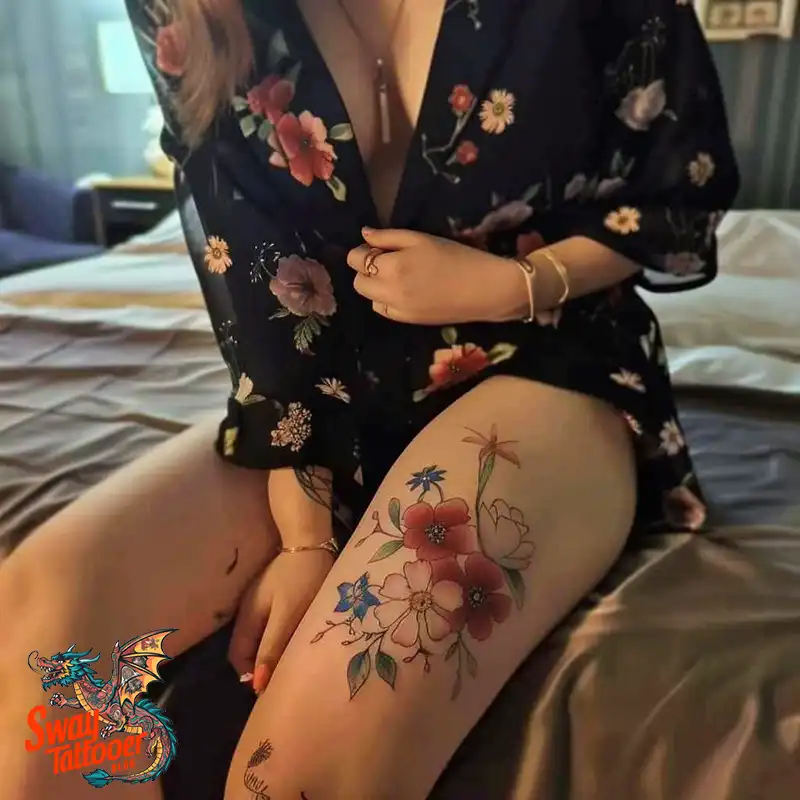
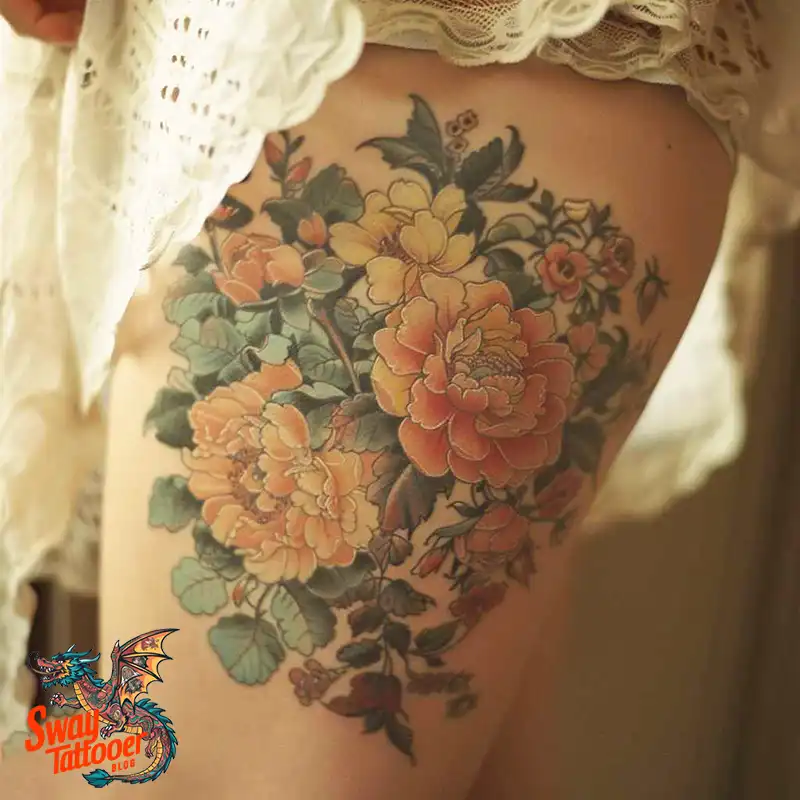
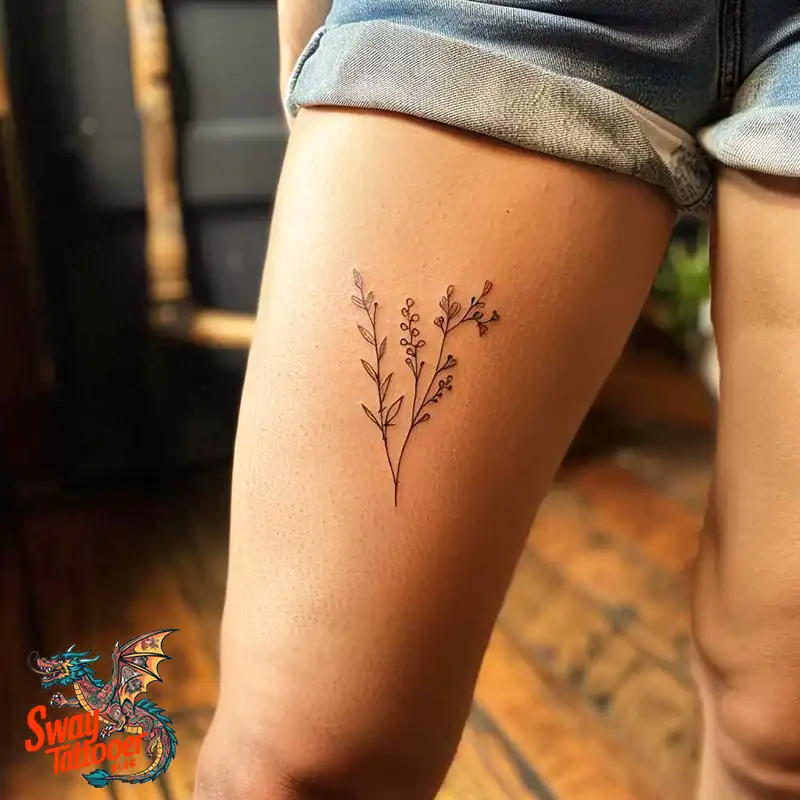
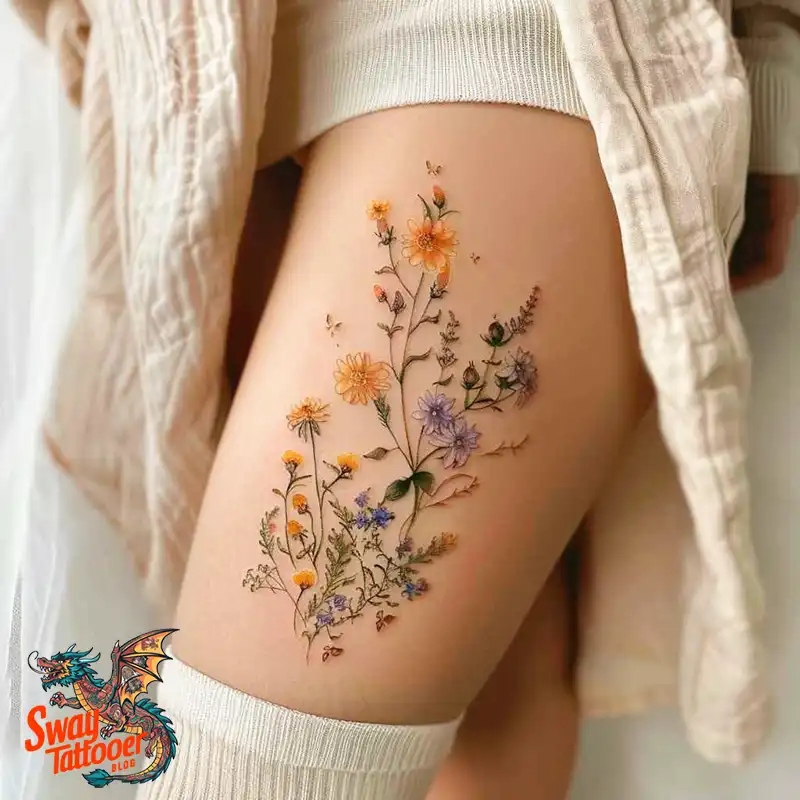
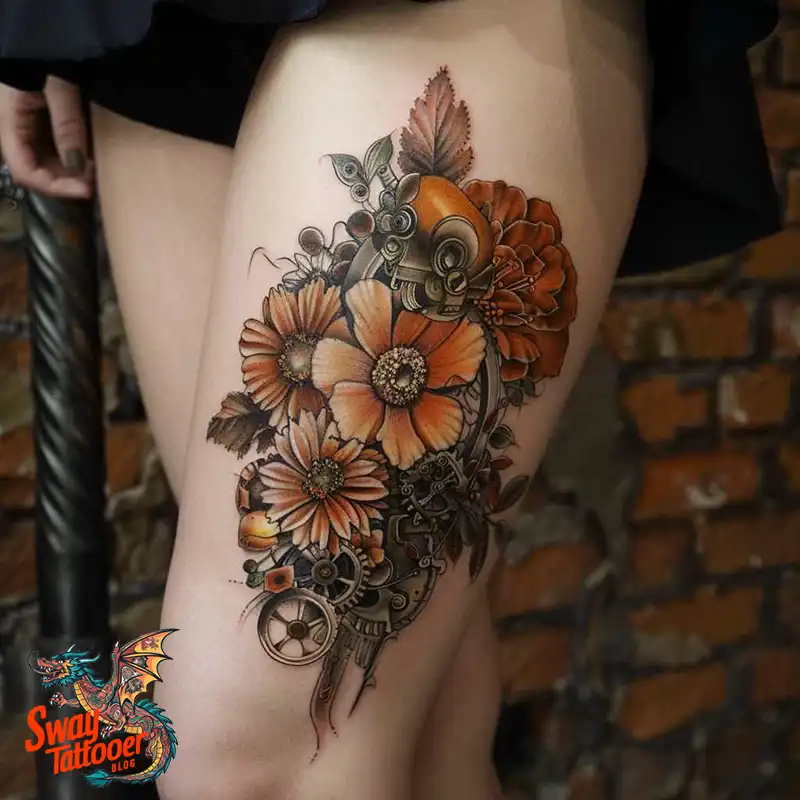
A Brief History of Floral Body Art:
Flower tattoos are rooted in centuries of tradition.
- The Sailor’s Rose: In the 18th century, sailors brought back tattoos from their travels. The rose quickly became a favorite, standing for love and beauty. Sailors would often get red rose tattoos to symbolize loyalty to the sweetheart waiting for them at home.
- The Language of Flowers: The Victorian era made the “language of flowers,” or floriography, very popular. Every single flower, like a rose or a lily, had a secret meaning taken from old myths. Your modern floral tattoo links this history of hidden messages with a contemporary celebration of strength and femininity.
Essential Aftercare for High-Friction Tattoos
Proper aftercare is critically important for the healing of any complex, color-heavy floral tattoo, but it presents unique challenges in the high-friction environment of the thigh, especially the inner thigh.
Immediate Care and Cleaning Protocol
Cleaning and Drying: You must gently wash the tattoo with a mild, fragrance-free soap and water. After washing, it is essential to pat the area dry with a clean paper towel gently. Then, allow the area to air-dry for 20 to 25 minutes to ensure all moisture is gone before you apply cream.
Moisturizing: A crucial next step is to apply a very small, thin layer of professional, fragrance-free aftercare ointment. You should do this three to four times a day. Do not put on too much cream! Too much cream can stop the skin from breathing and cause a thick scab to form. Use only what the skin can absorb completely.
Friction Management and Clothing Protocol
The thigh is always moving, which creates friction and is a big risk factor during healing. You need to adjust your clothing for the healing period.
Clothing Selection: You must strictly avoid tight clothing. This includes leggings, compression gear, or skinny jeans. The rubbing from tight fabric can easily irritate the fresh ink, causing problems with the lines and color. Always choose loose-fitting, breathable fabrics like cotton or linen. These materials allow air to move around the tattoo and prevent sweat from building up.
Sleep Logistics: If your tattoo is on the back or inner thigh, you should sleep on your stomach or side. You can use extra pillows to stop yourself from moving too much and rubbing the tattoo against the sheets or your other leg. Healing is often easier in warmer months when you can wear loose shorts or skirts.
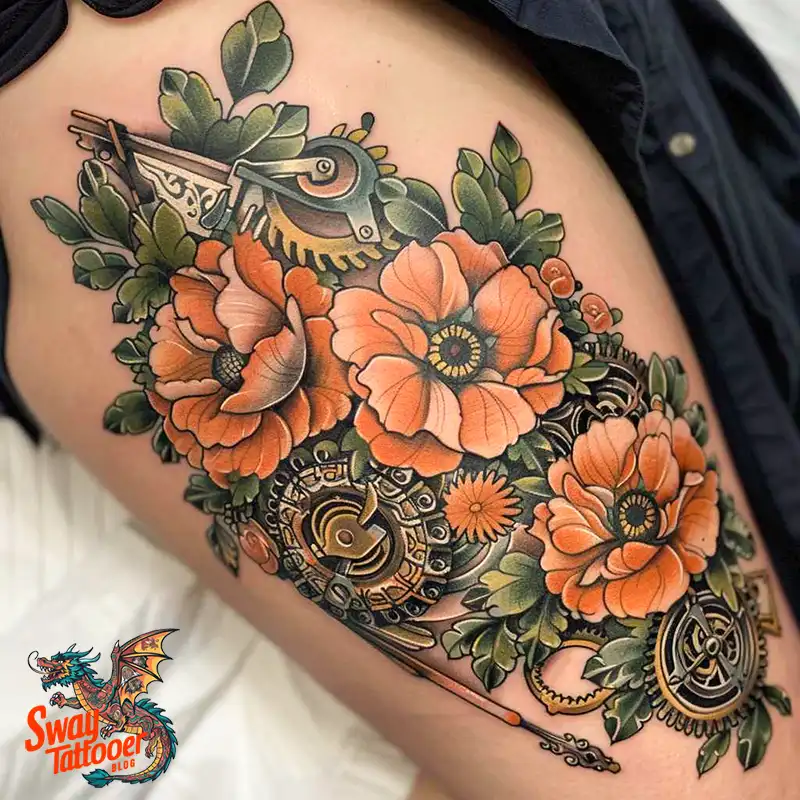






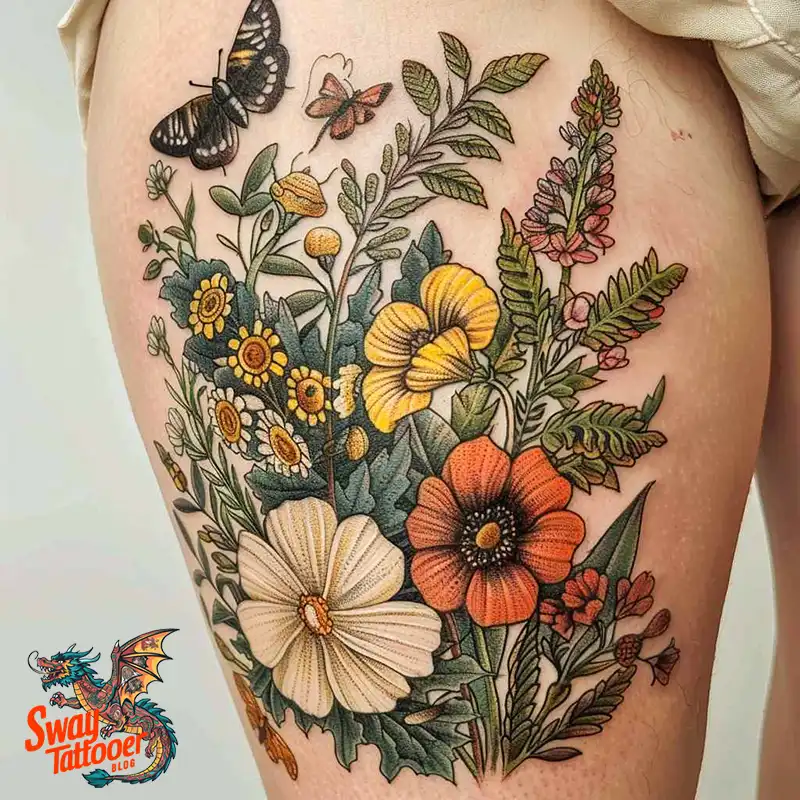

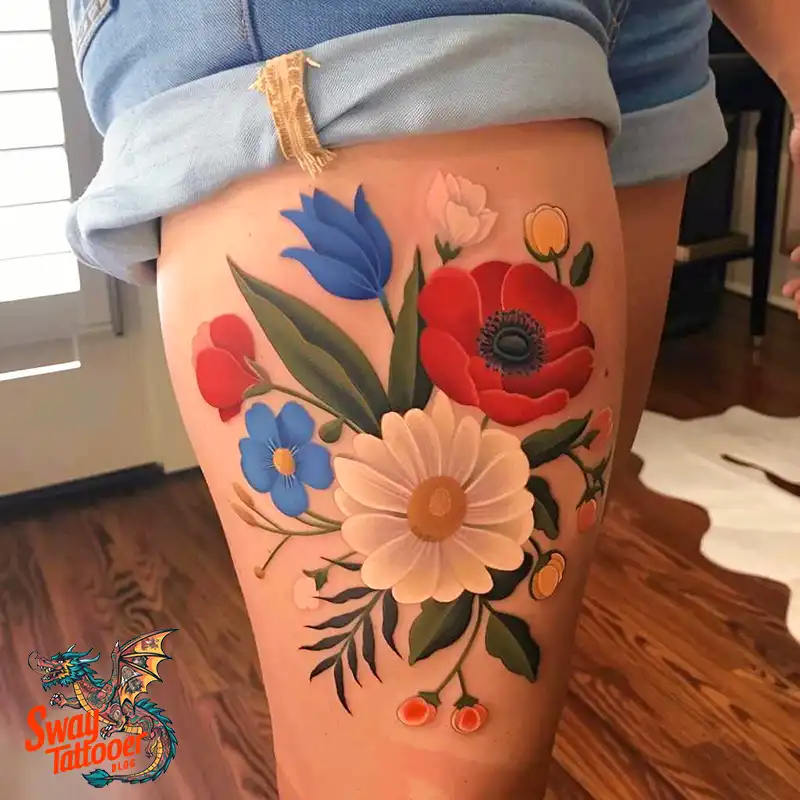
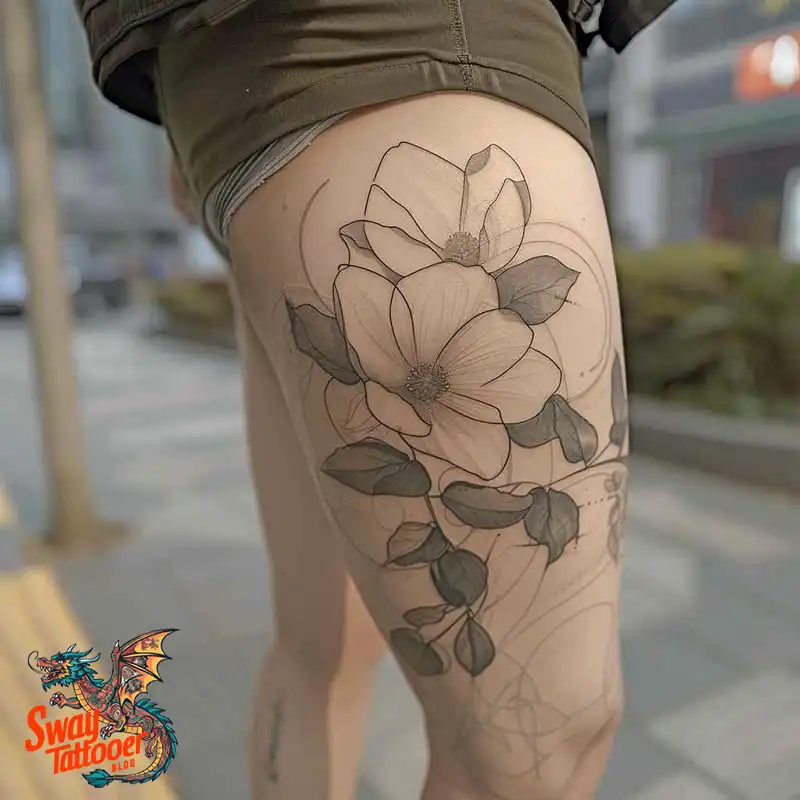
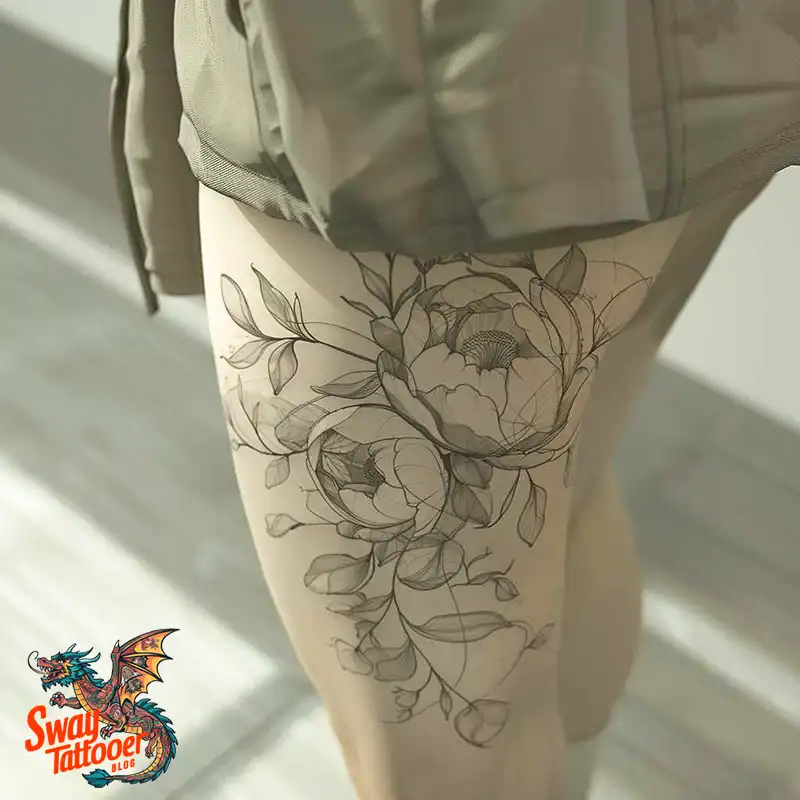
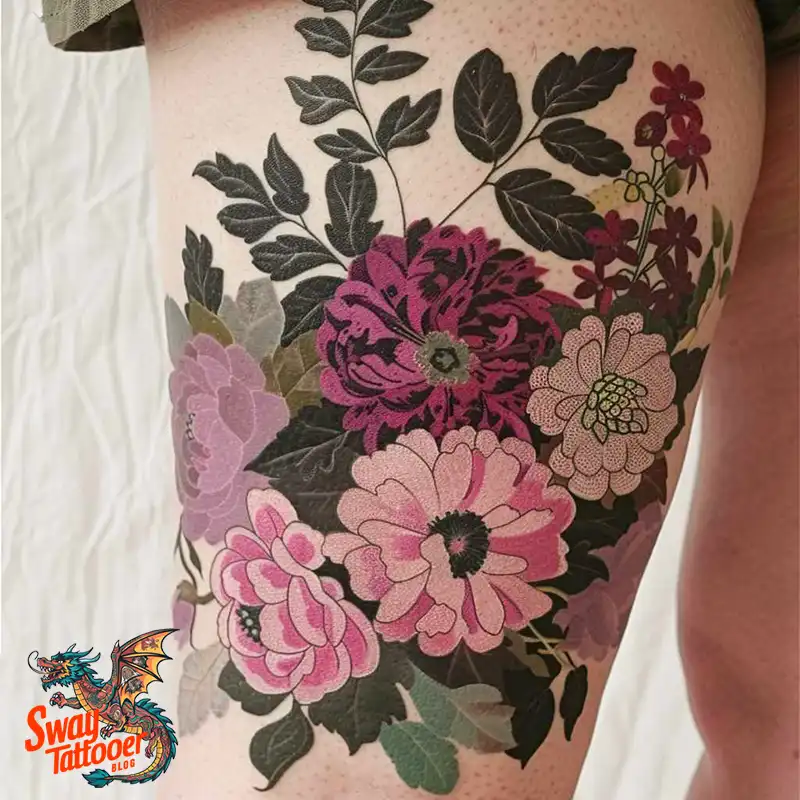

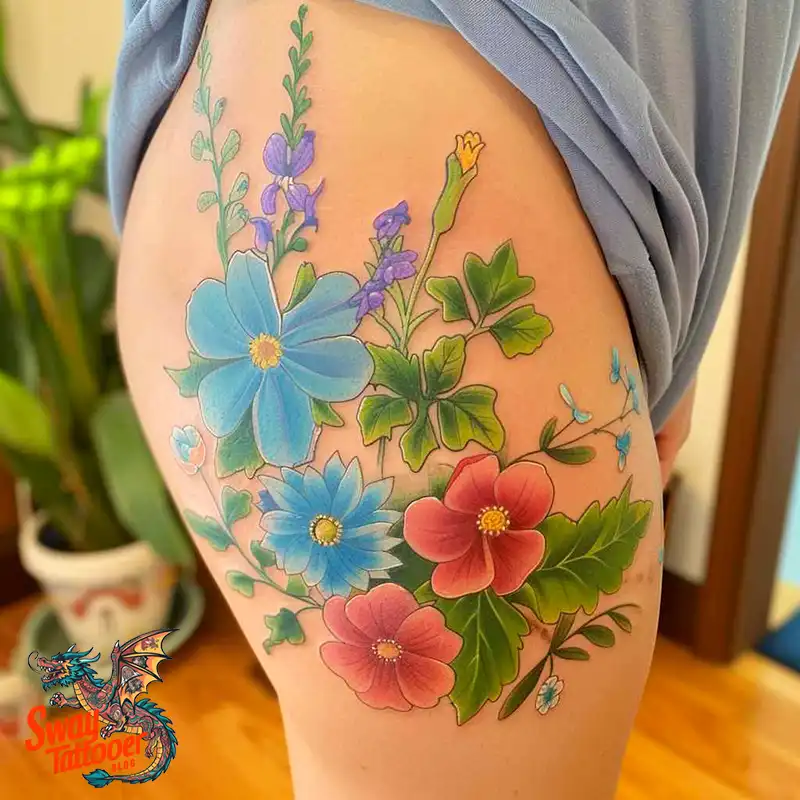
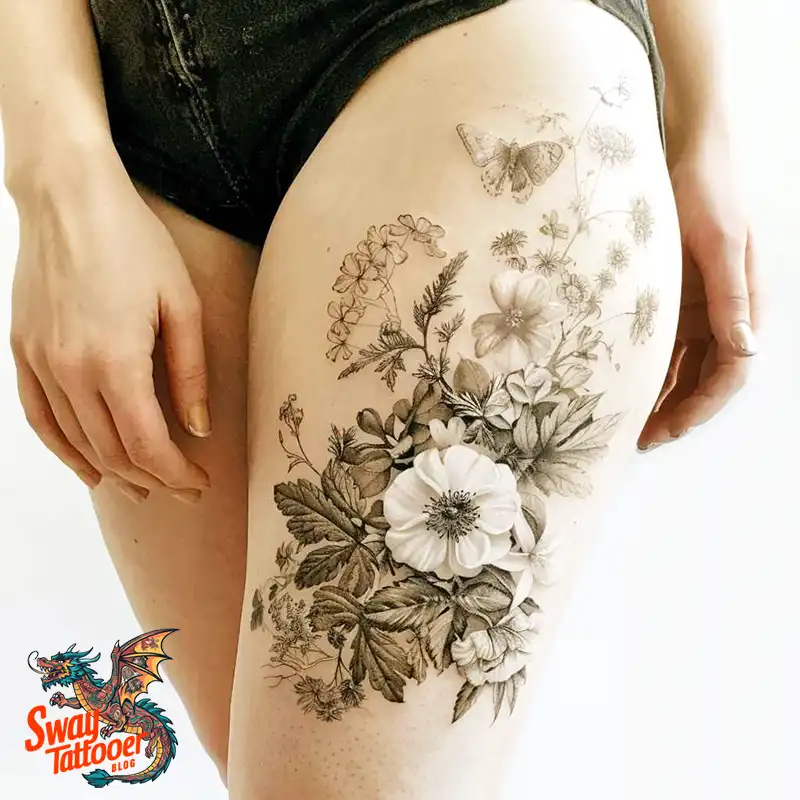
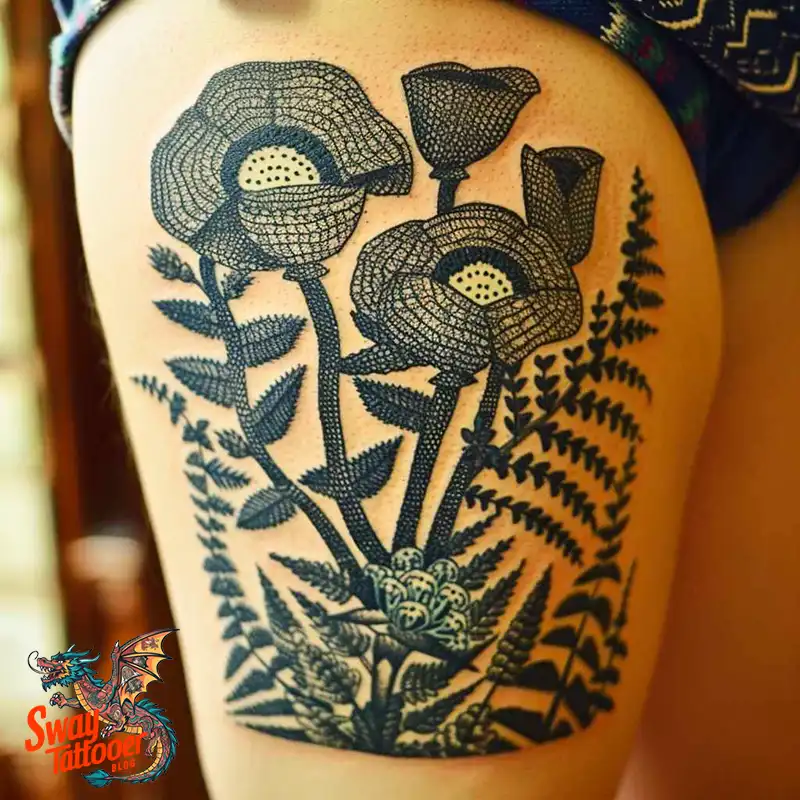

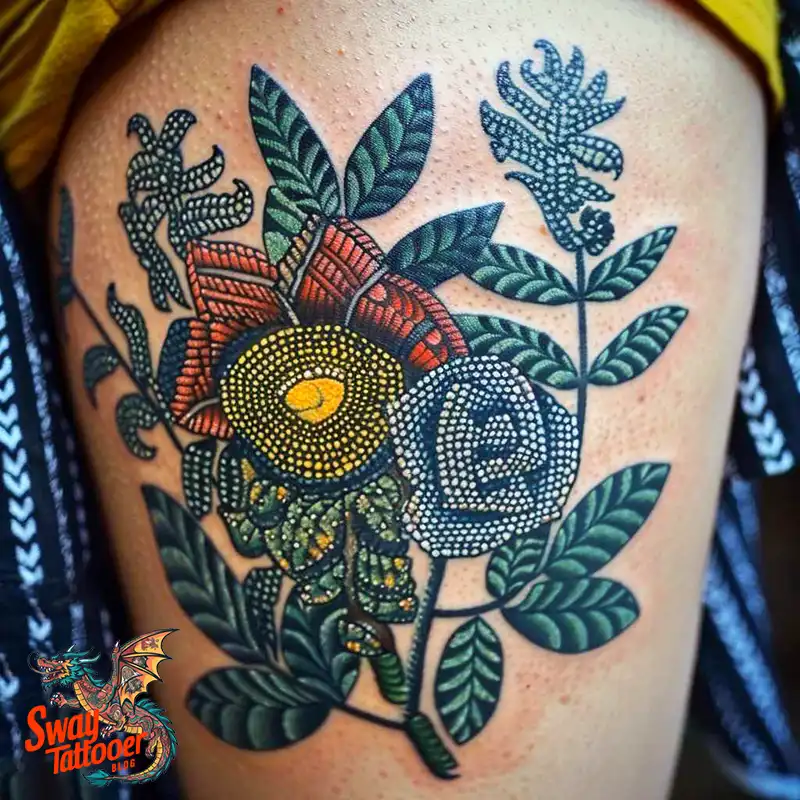
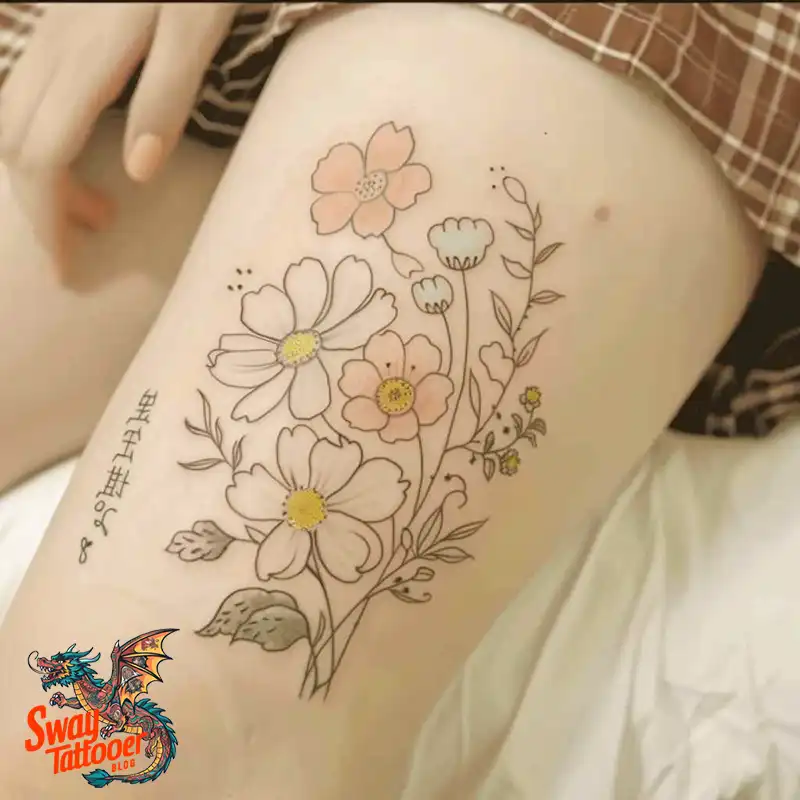

Long-Term Preservation
Protecting your tattoo from the sun is the most important step for keeping the color bright.
- Sun Protection: Sunlight makes colors fade and lines blur. Even though the thigh is often covered, you must avoid direct sun exposure. Always apply a sunscreen with a high SPF (30 or higher) when the area is exposed to daylight.
- Moisture: Keep your skin moisturized with gentle, fragrance-free lotions. This helps stop the skin from cracking and drying out, which also causes colors to fade over time. If an old tattoo has faded, an artist can restore its color with a professional touch-up.
Frequently Asked Questions:
Q: How painful is a floral thigh tattoo?
A: The thigh is usually less painful than bony areas like the ribs or ankle. However, pain varies greatly by area: the outer thigh is the most comfortable place to get tattooed. The inner thigh is the most sensitive due to thinner skin and more nerves, so that it will hurt more.
Q: How long does the healing process take?
A: The top layer of your skin typically heals in two to three weeks. But the deeper skin layers need one to two months to fully settle and heal the ink. You must follow the cleaning and moisturizing rules for the entire recovery period.
Q: Will the tattoo distort if the wearer’s weight changes?
A: Tattoos placed on areas where weight fluctuation is common, like the inner thigh or hip, may be affected by extreme weight gain or loss. Placing the art on the dense muscle of the outer or front thigh helps reduce the risk of distortion.
Q: How long does a session for a large floral thigh tattoo last?
A: A complex, large floral tattoo—especially in high-detail styles like Realism—cannot be finished in one session. These projects require multiple sessions, each lasting about three to six hours, with several weeks of healing time in between.
Q: Why is the thigh ideal for color tattoos?
A: The thigh is a great location for complex color work because it is often covered by clothes. This natural protection means the colors are exposed to less UV radiation, which helps vibrant pigments like red and yellow stay bright and saturated for much longer than tattoos on your arms or lower legs.

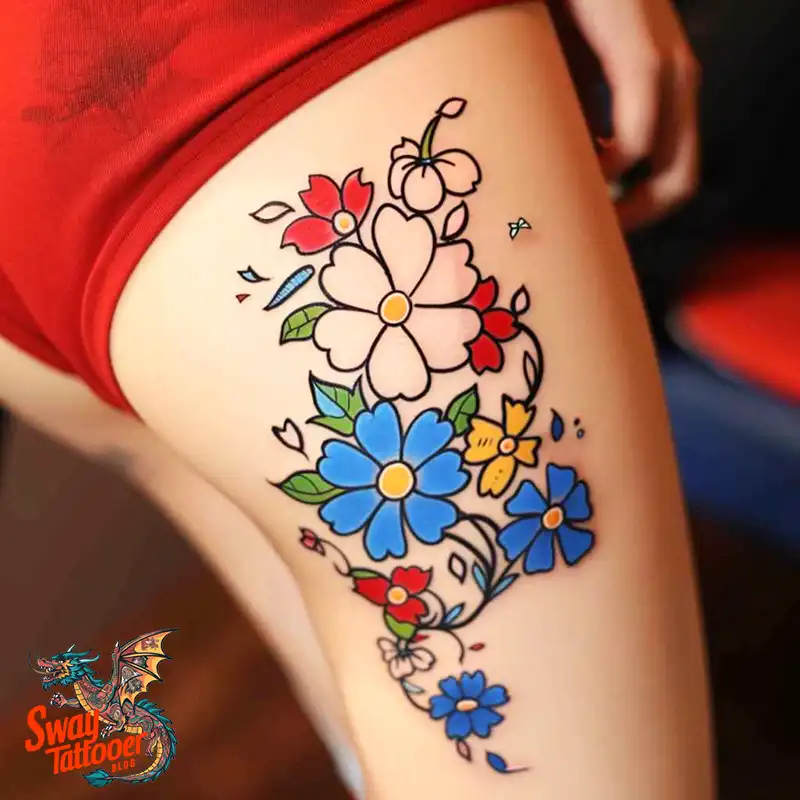
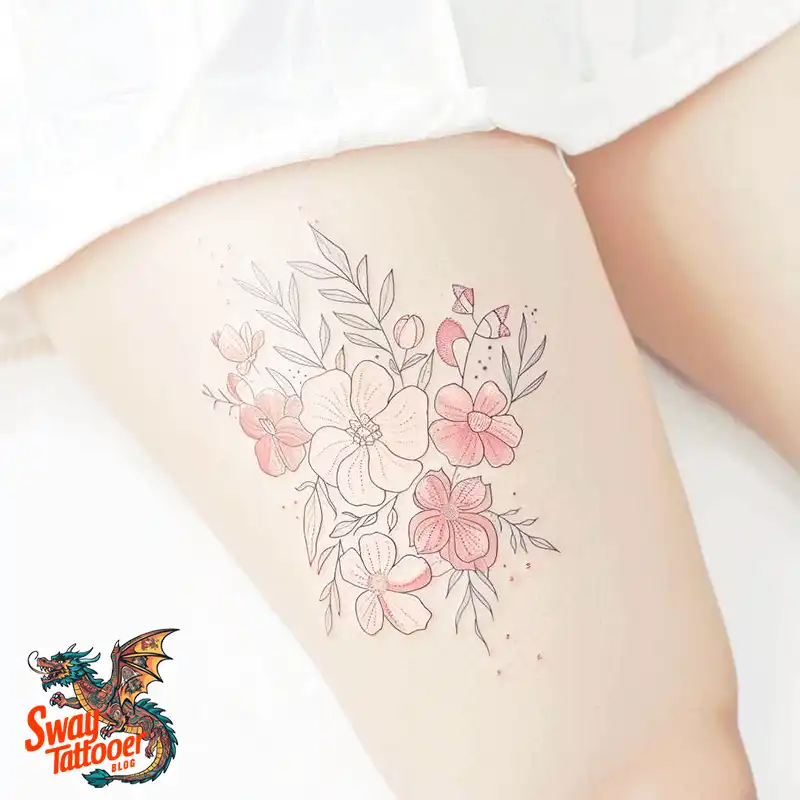
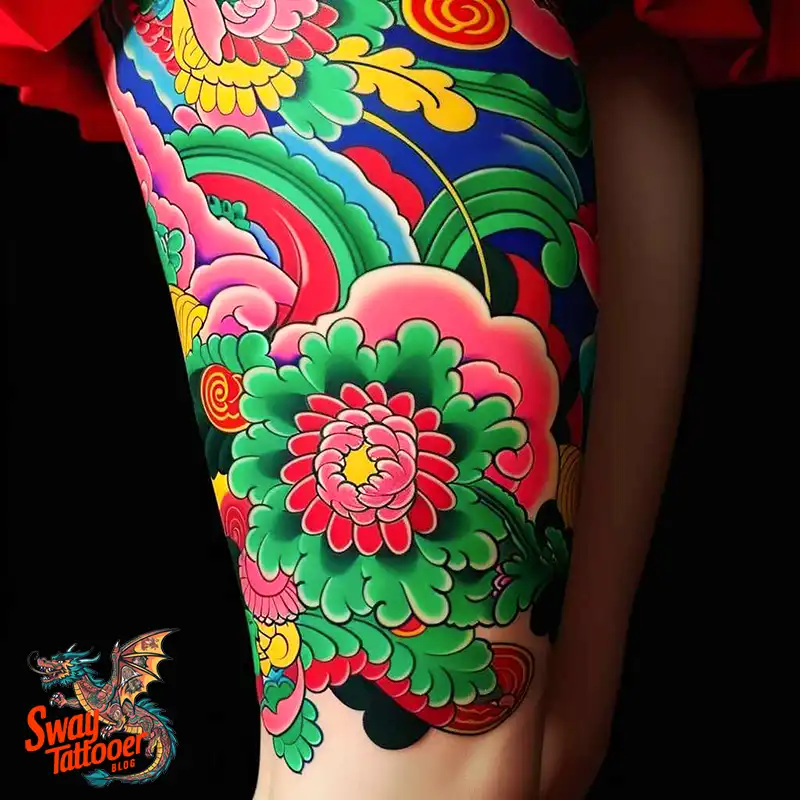
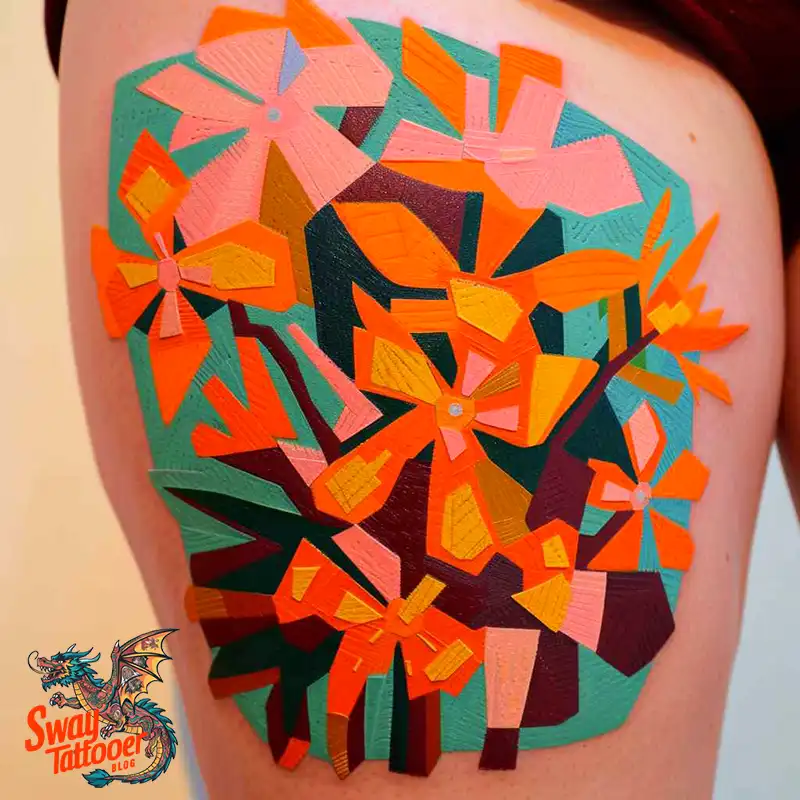

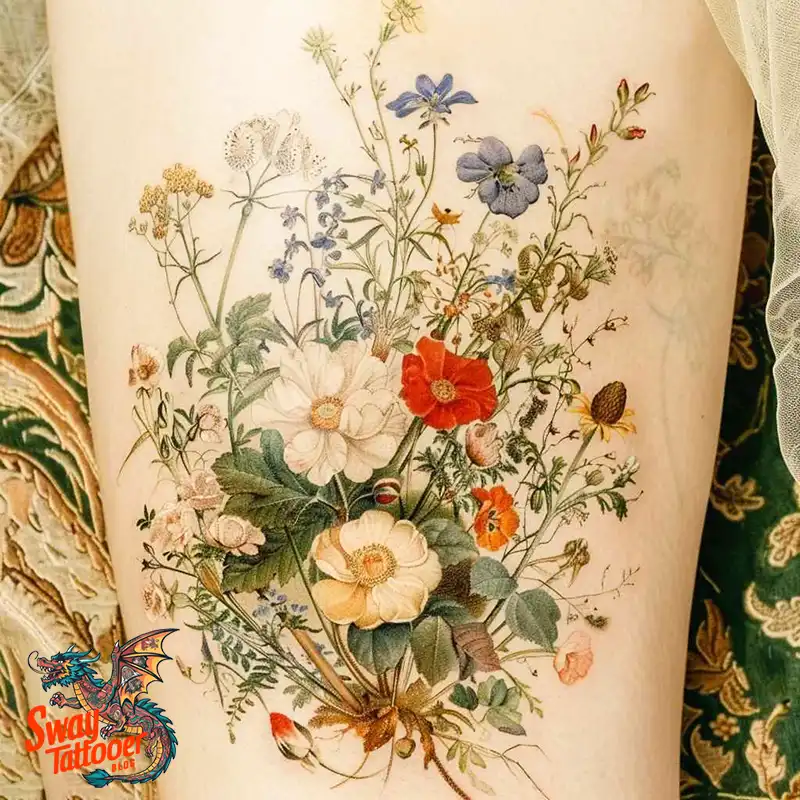


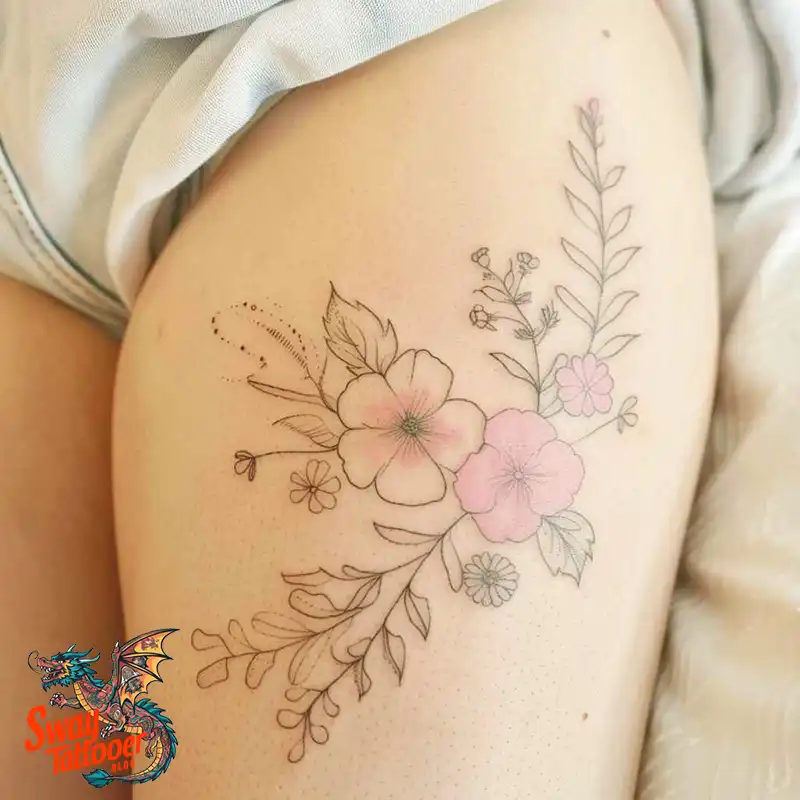
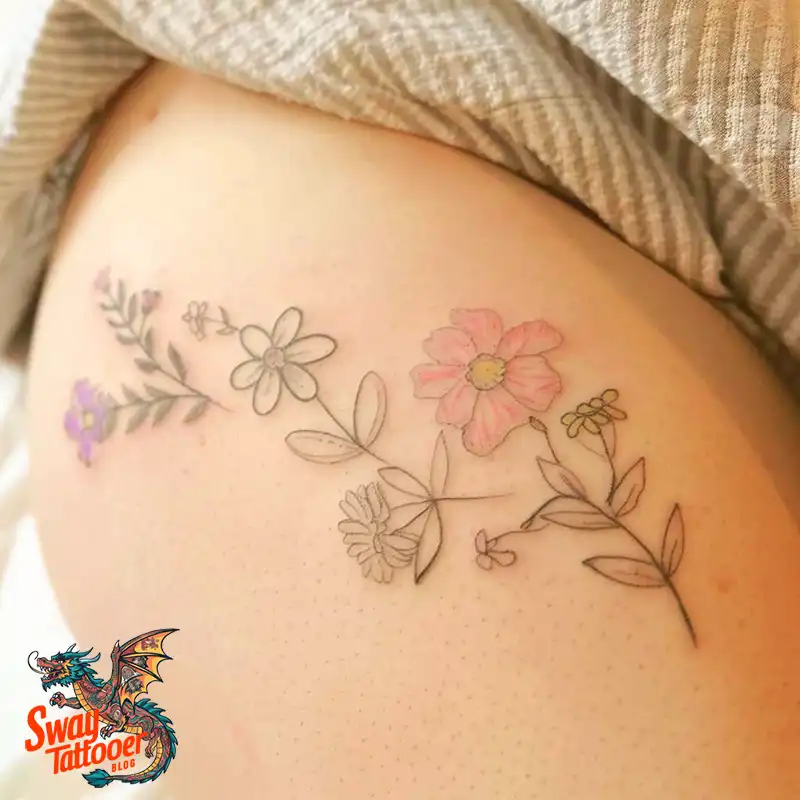
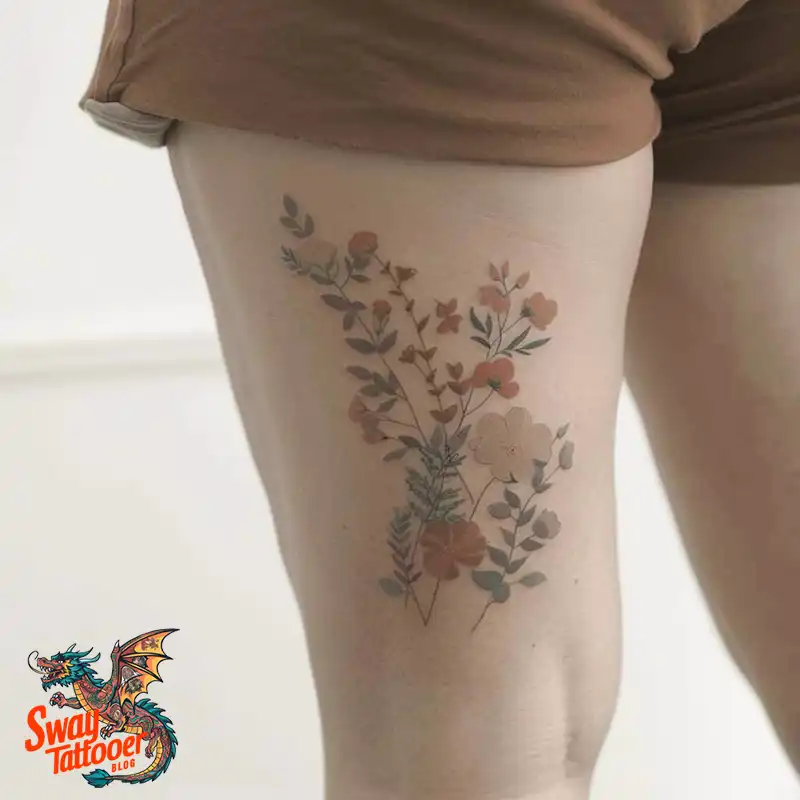


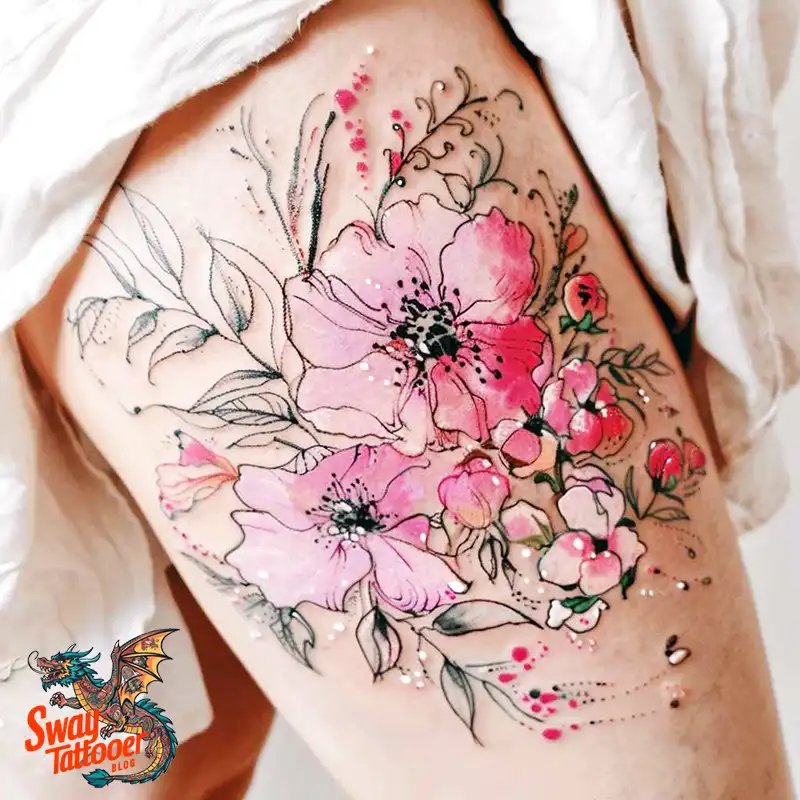
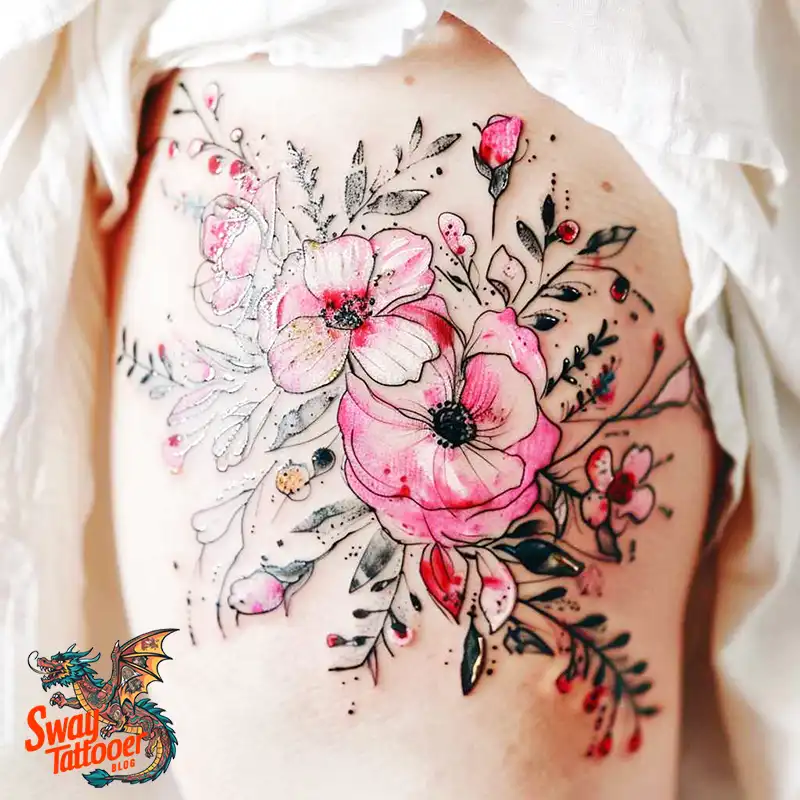
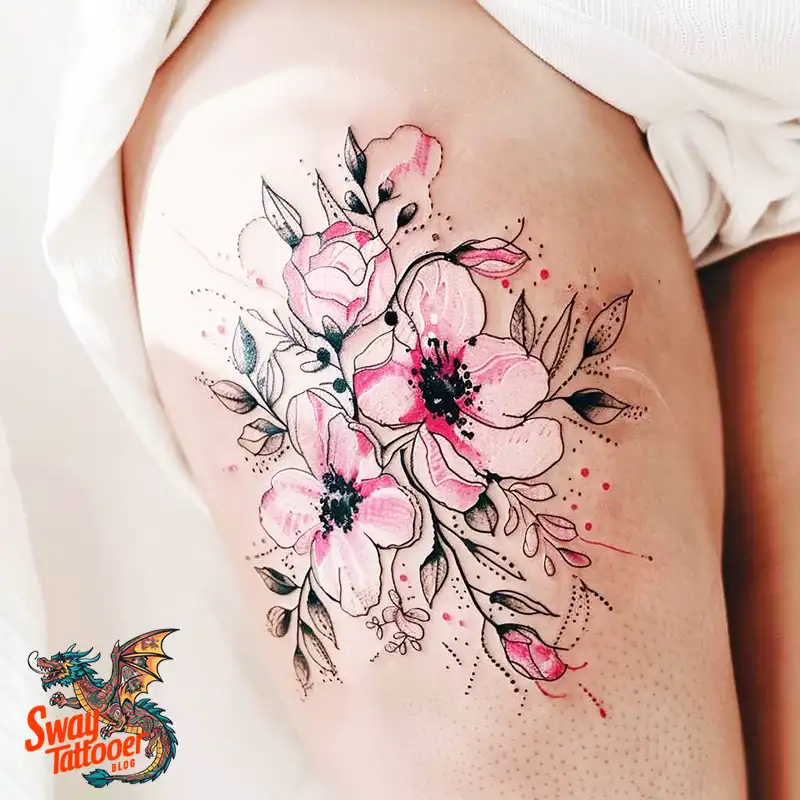
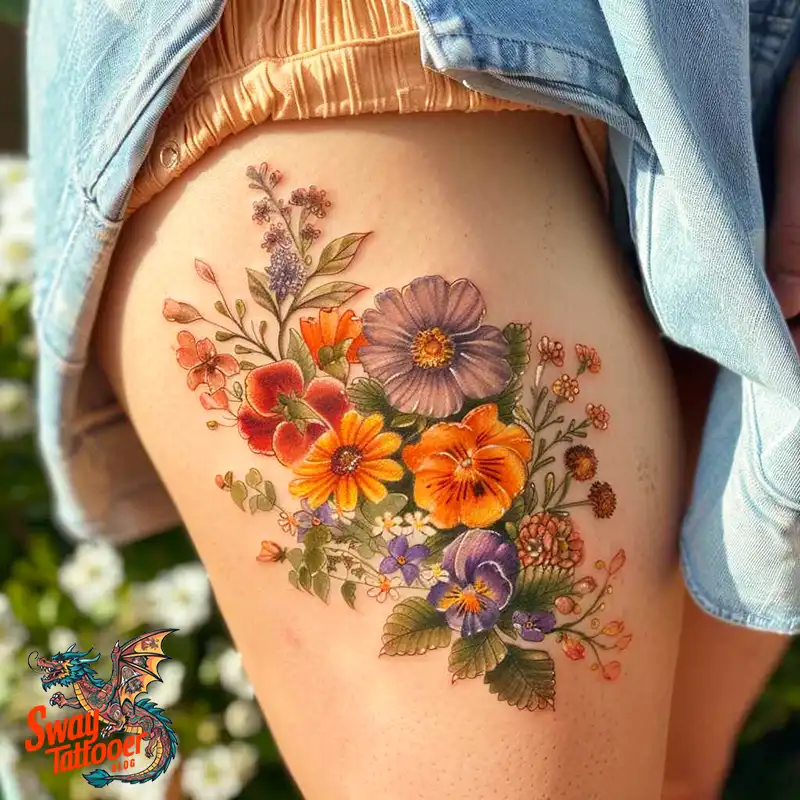
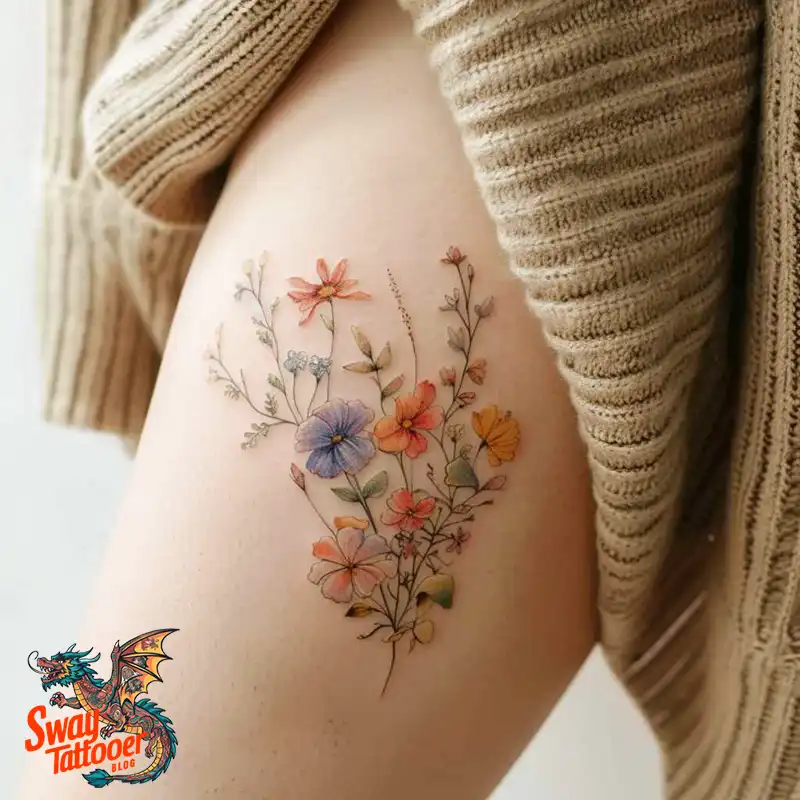
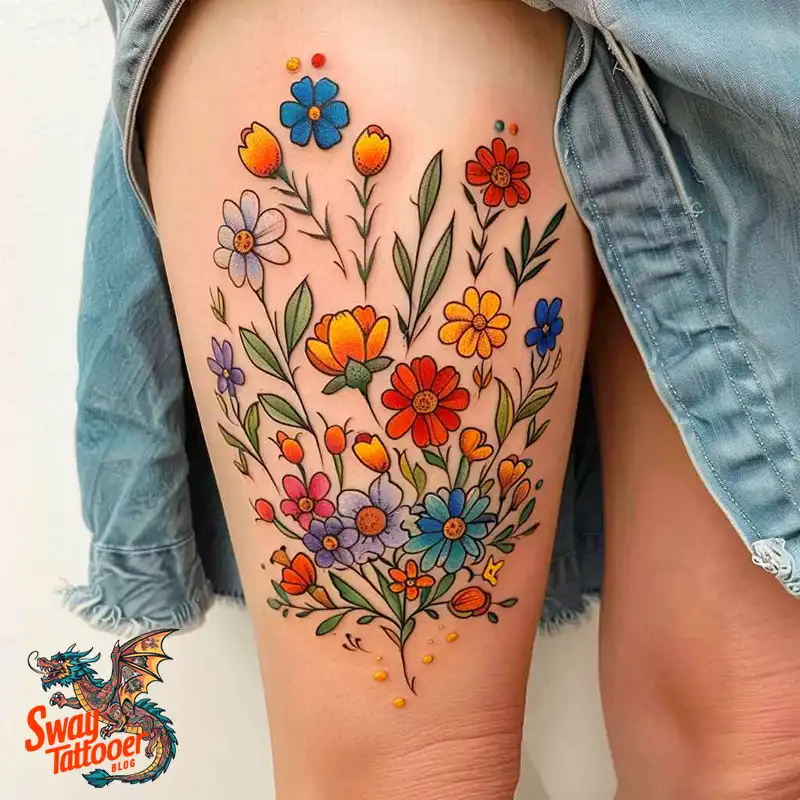
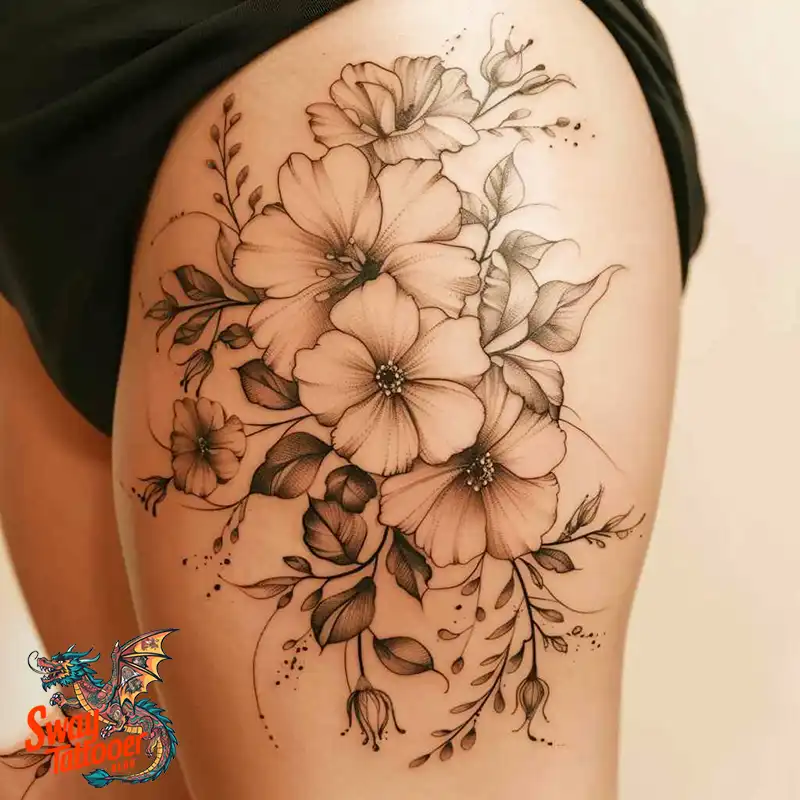
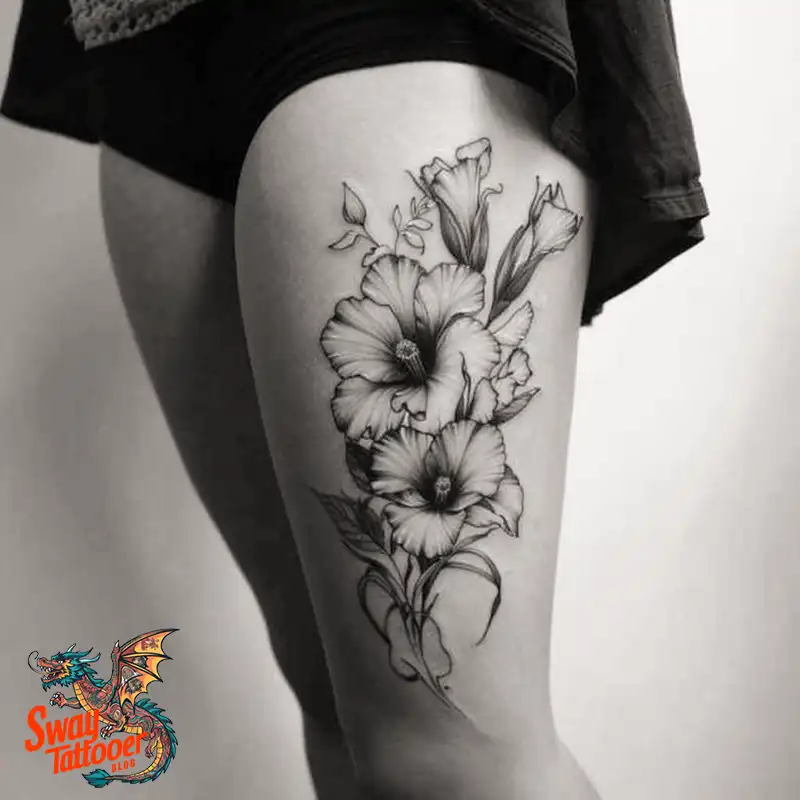

Conclusions:
The floral thigh tattoo is an incredible choice. It offers a large, cushioned space for beautiful, detailed art. It combines old flower meanings with modern statements of strength and femininity.
Our main recommendation is to choose the right spot and be very dedicated to aftercare. The outer thigh is the easiest place to heal. If you choose the inner thigh, you must be extremely careful to wear loose, breathable clothing to avoid rubbing and irritation. Always choose an artist who is an expert in large-scale flow. This ensures your beautiful floral design moves seamlessly with the curves of your body, creating a stunning and lasting piece of art.


Leave a Reply